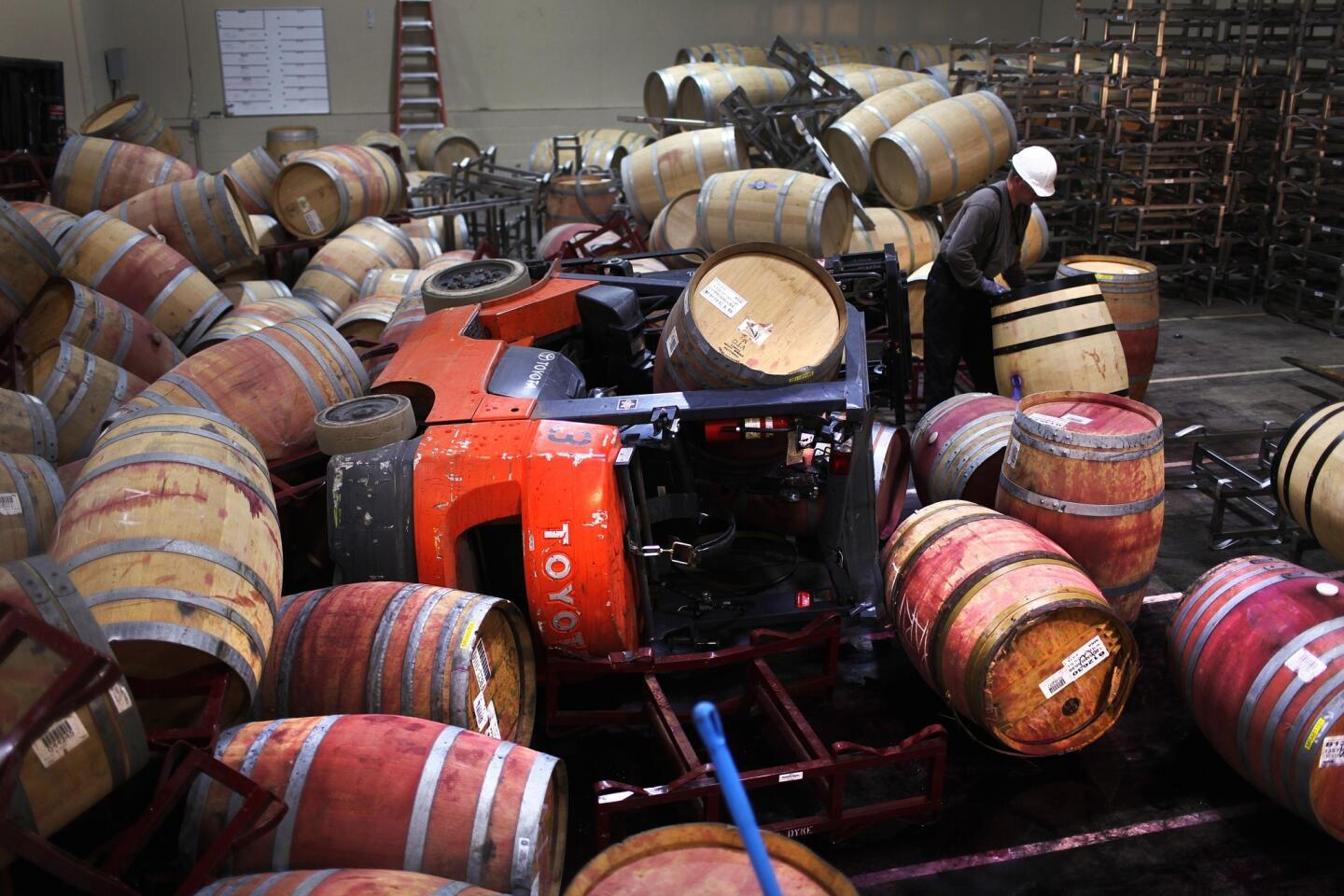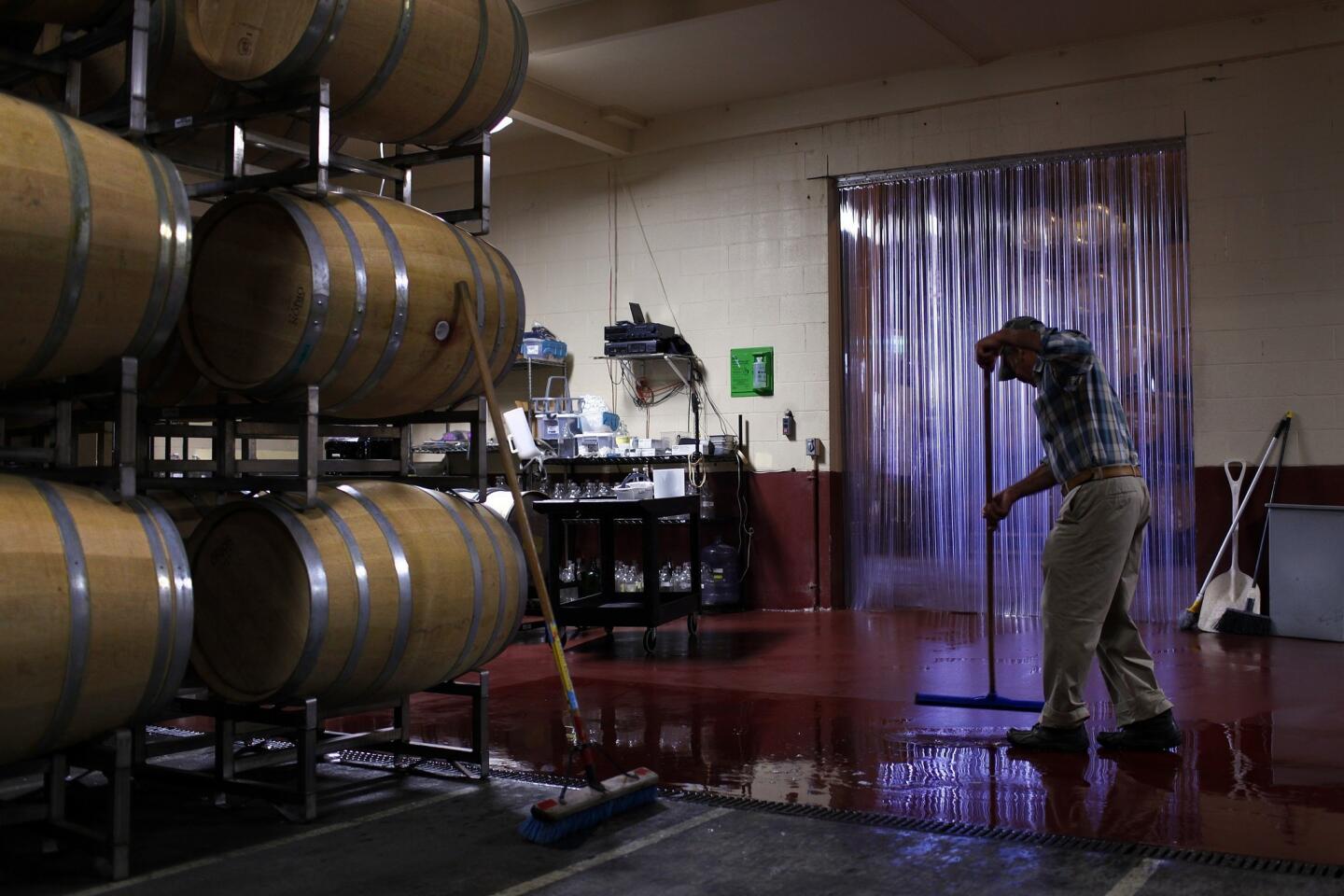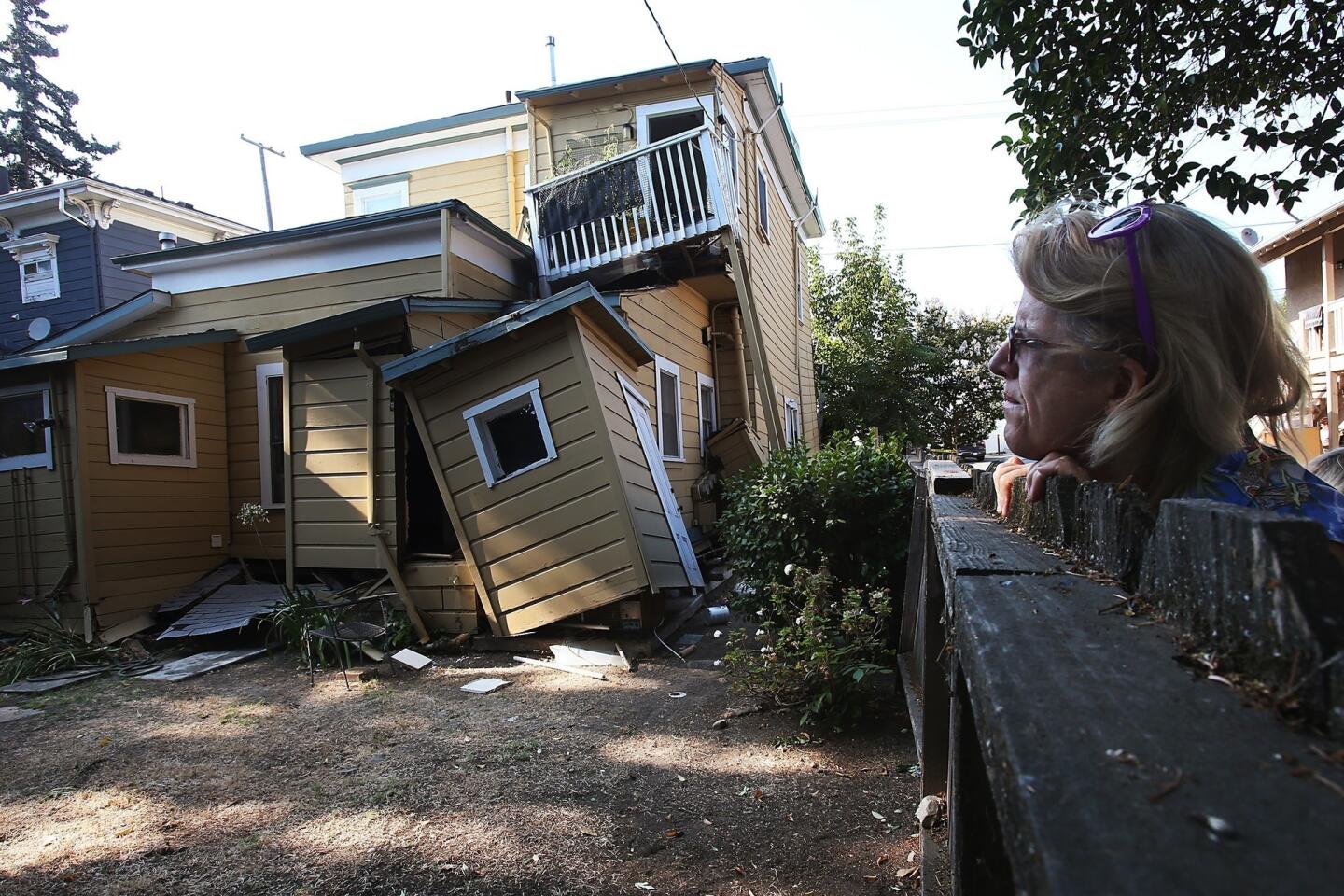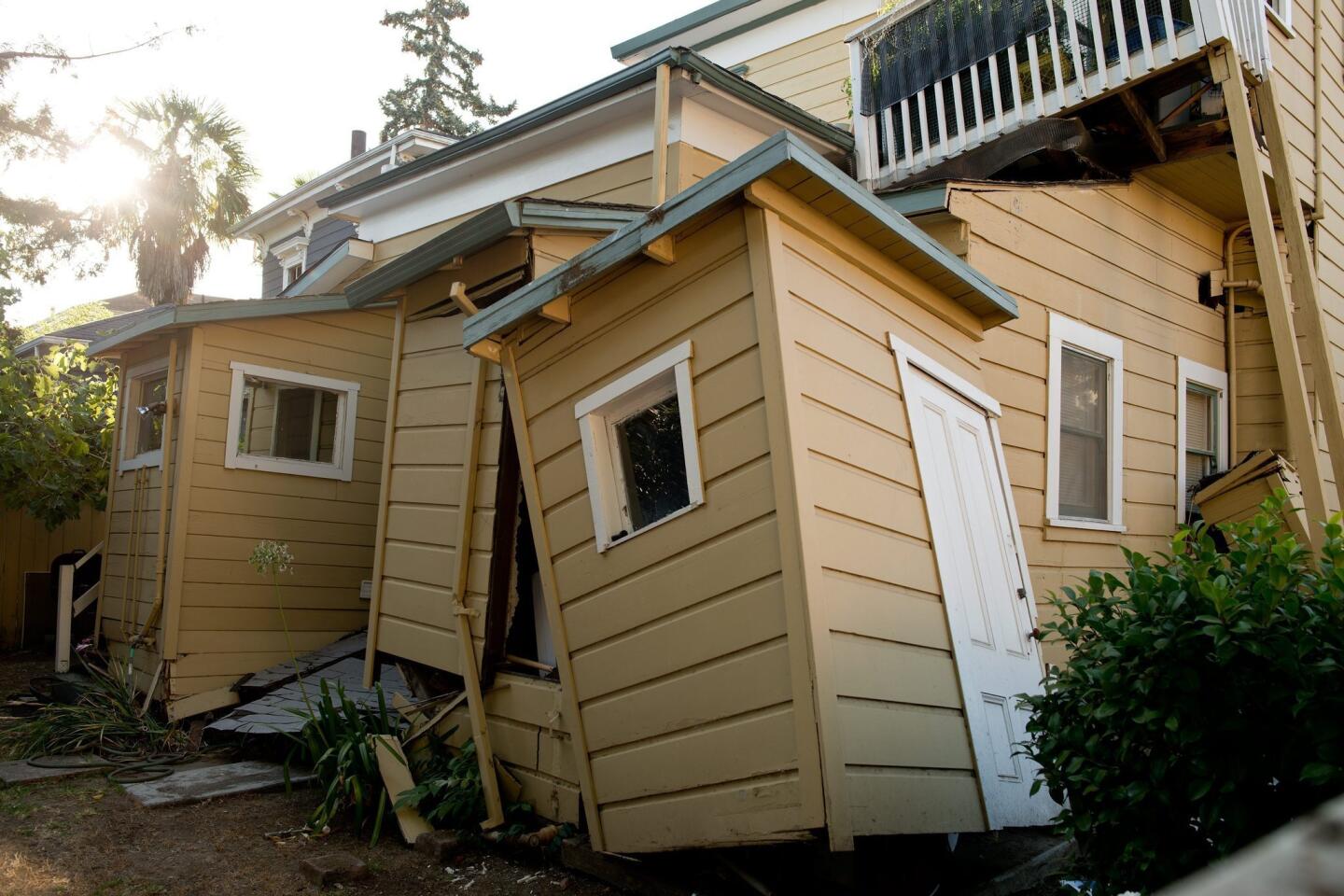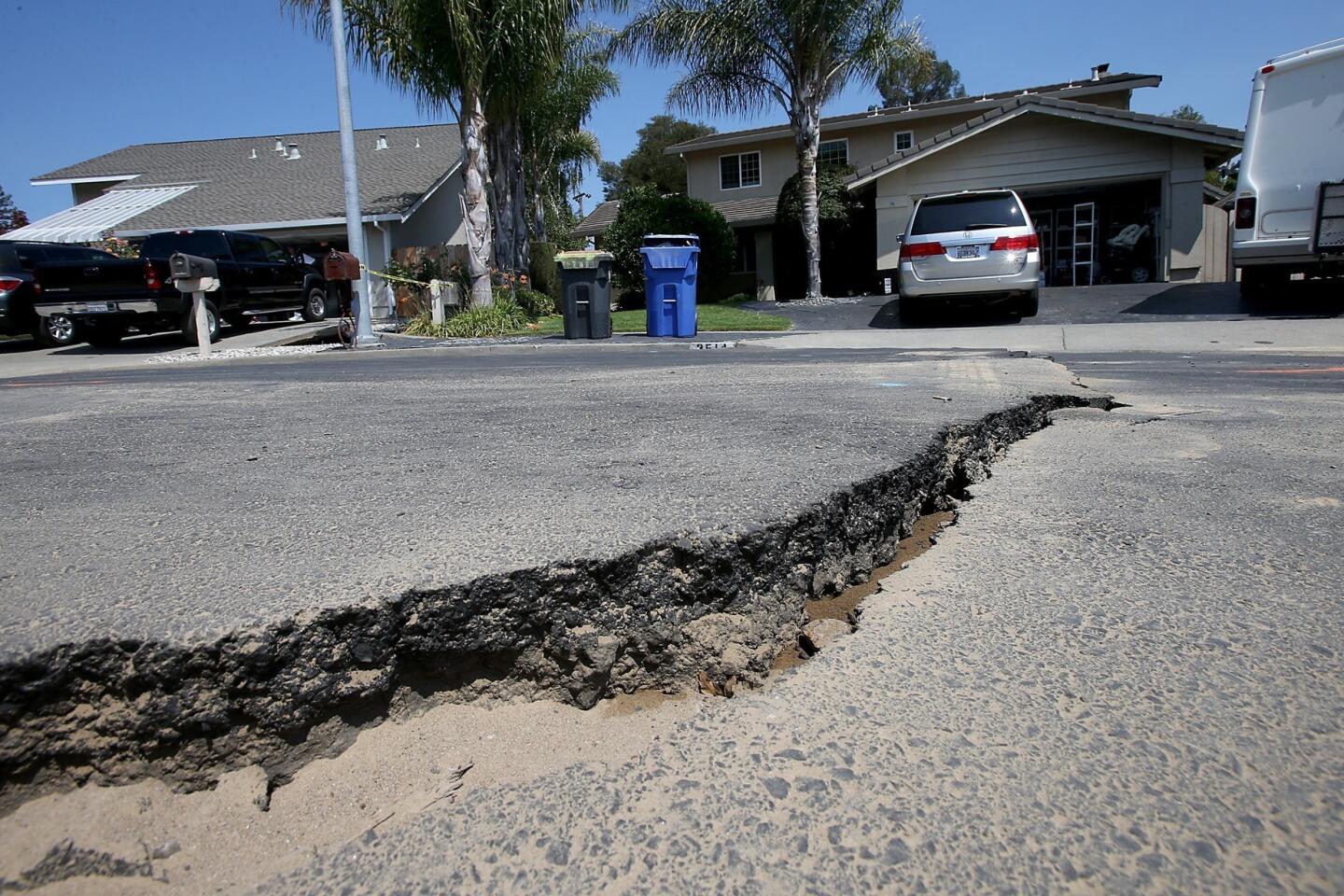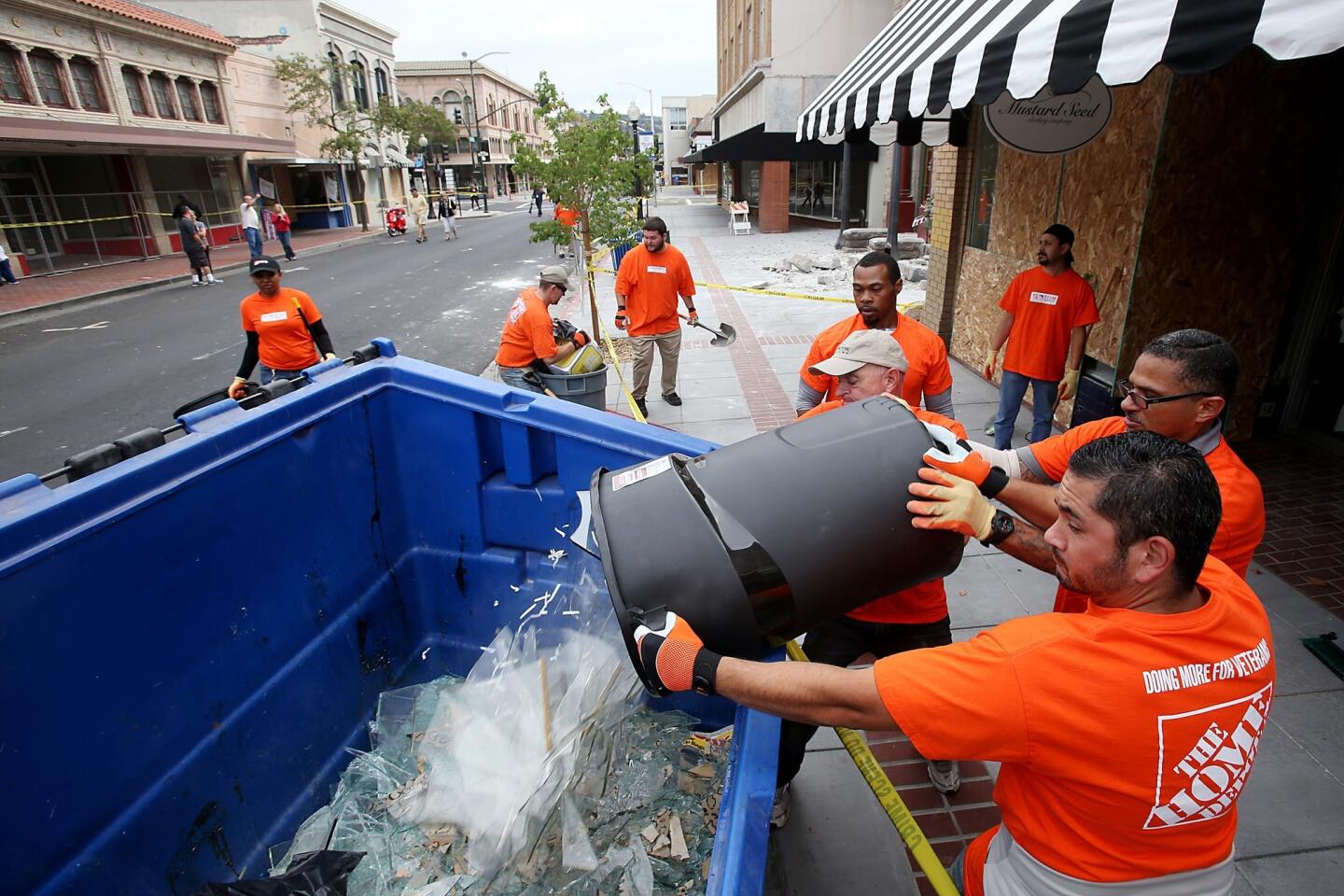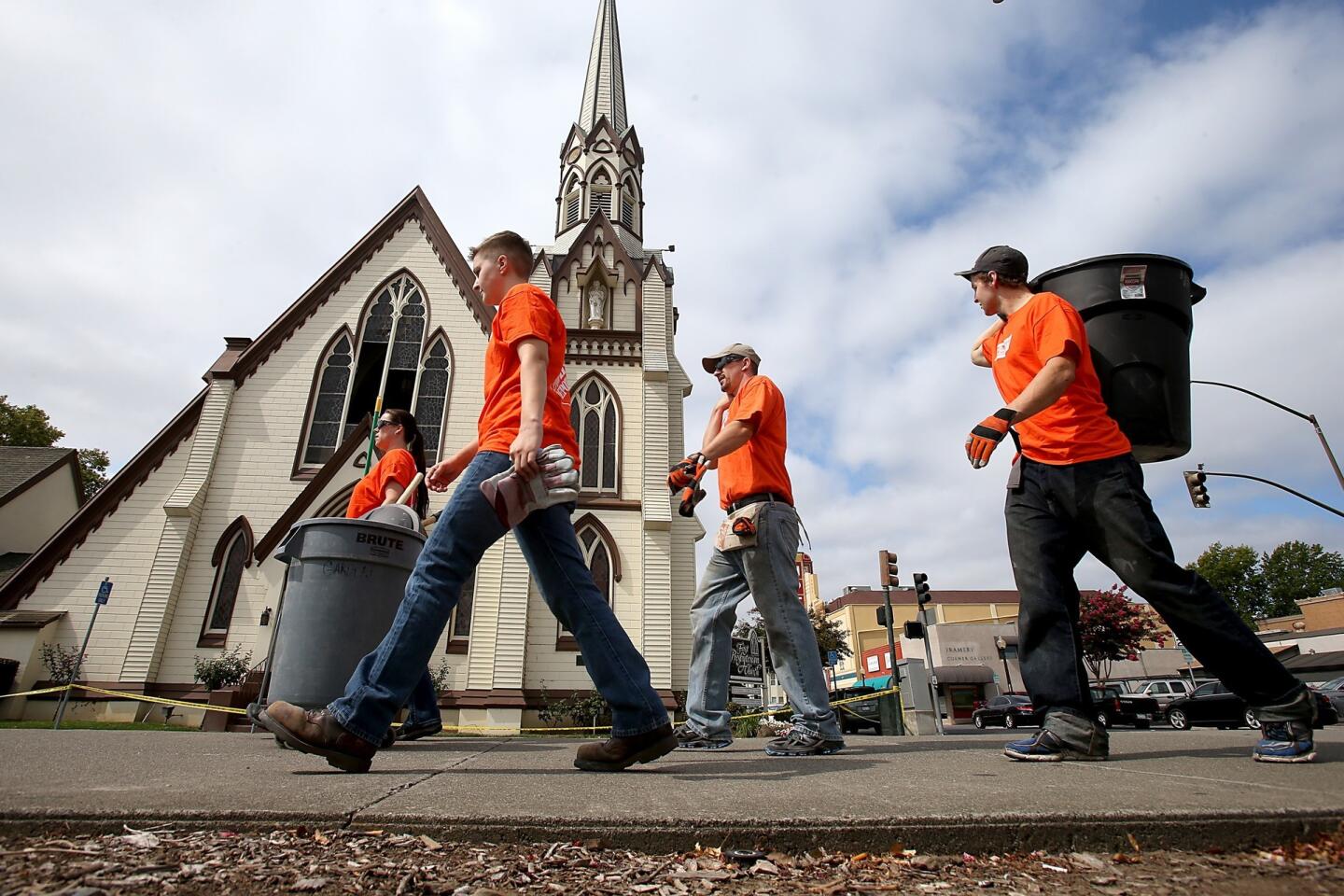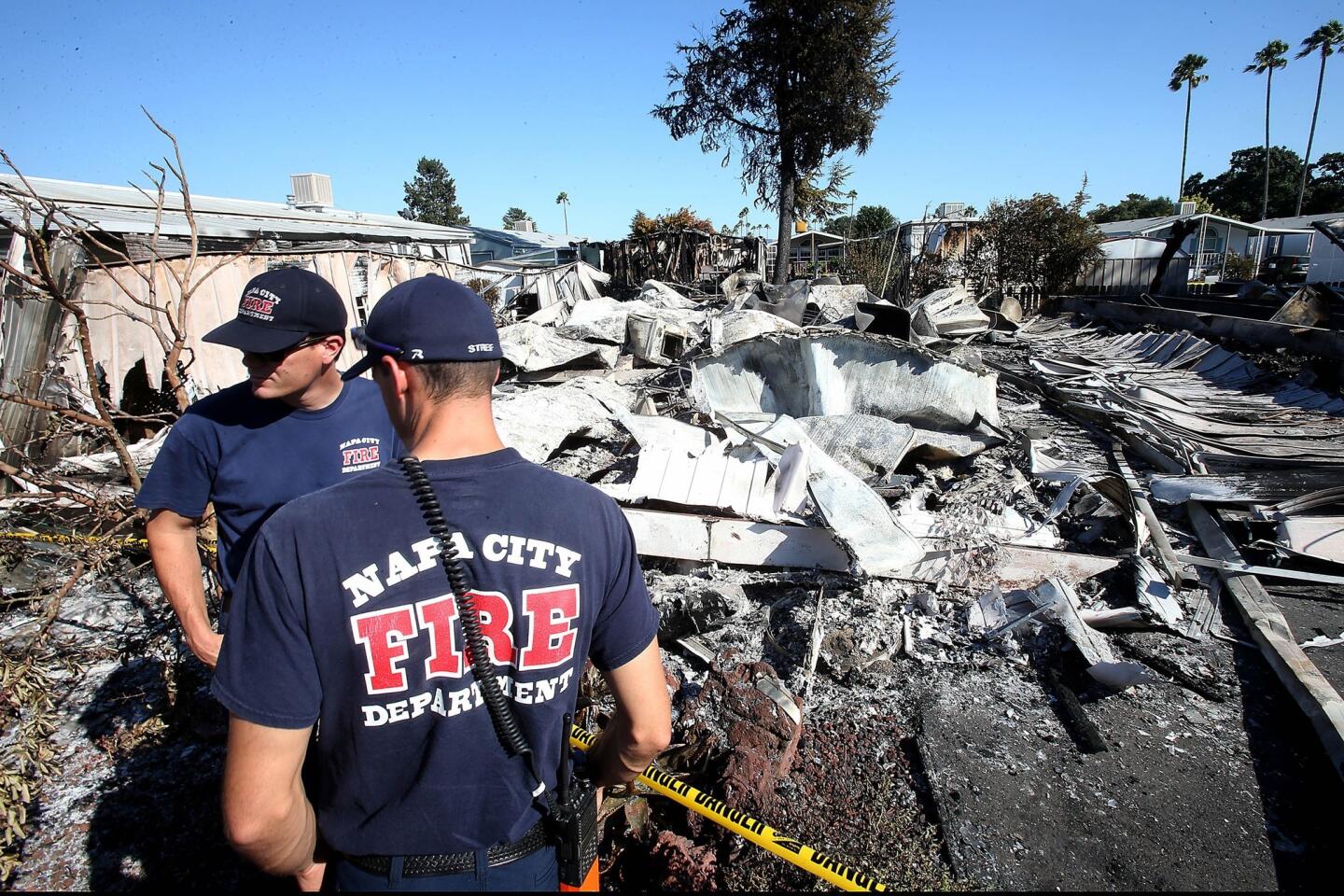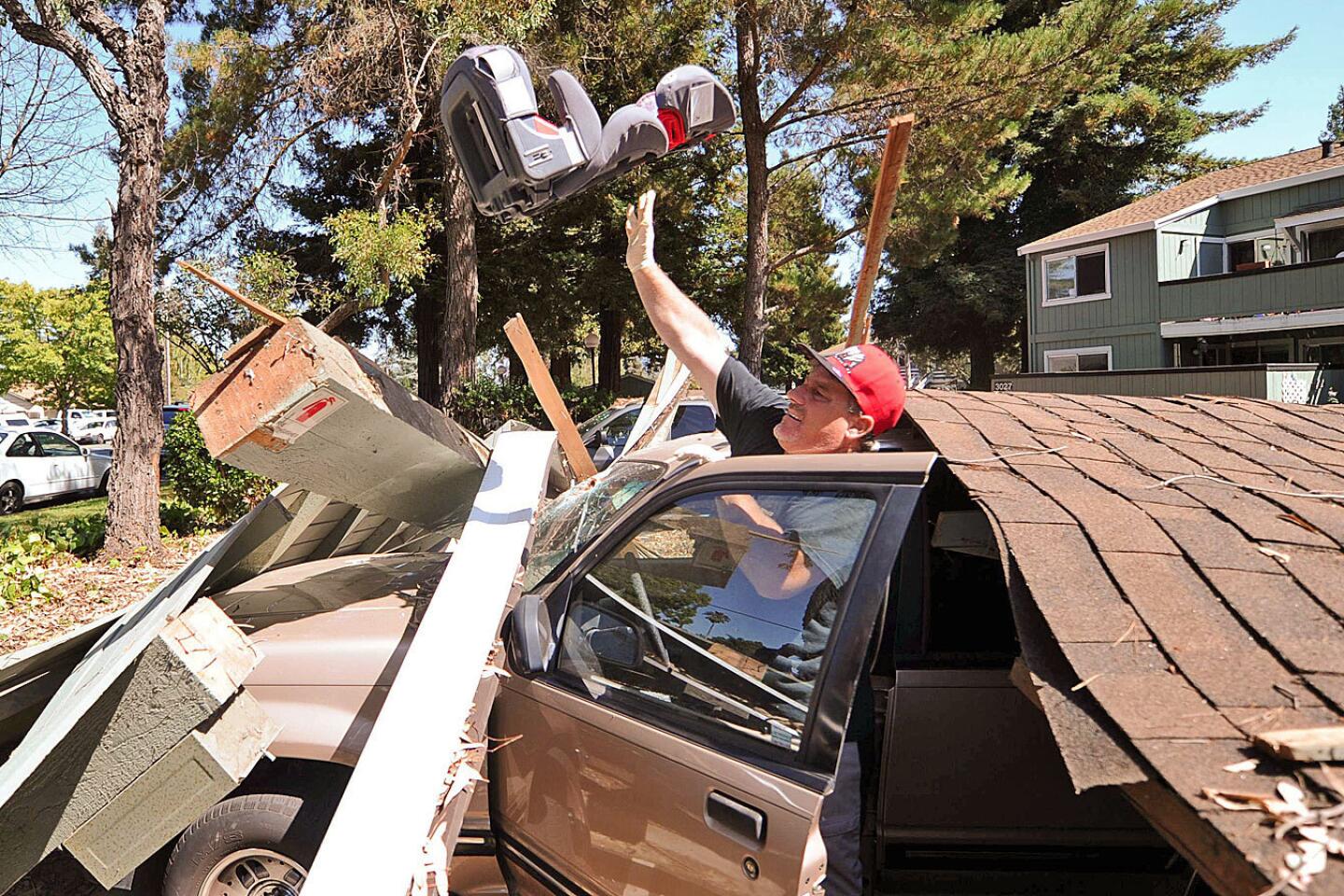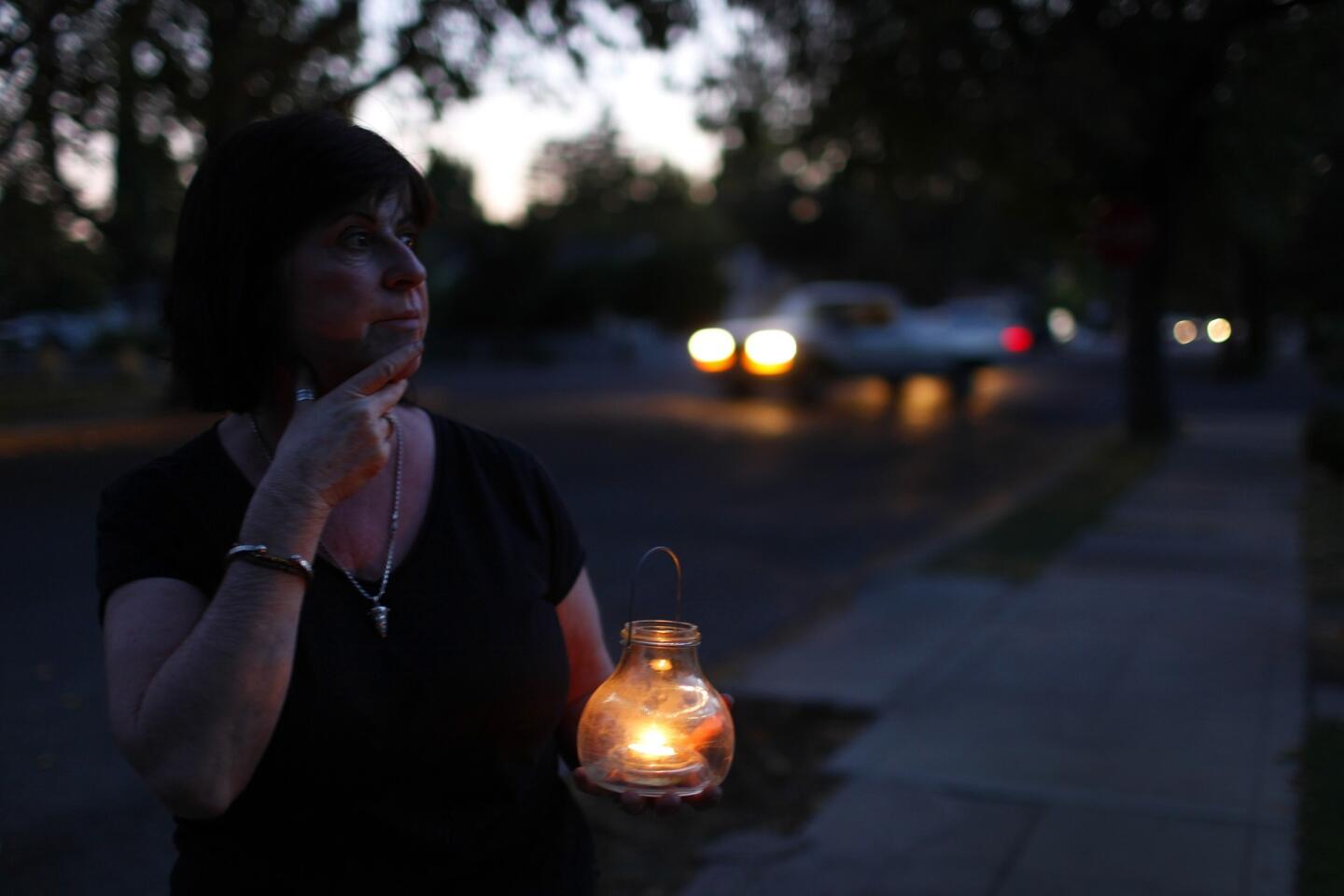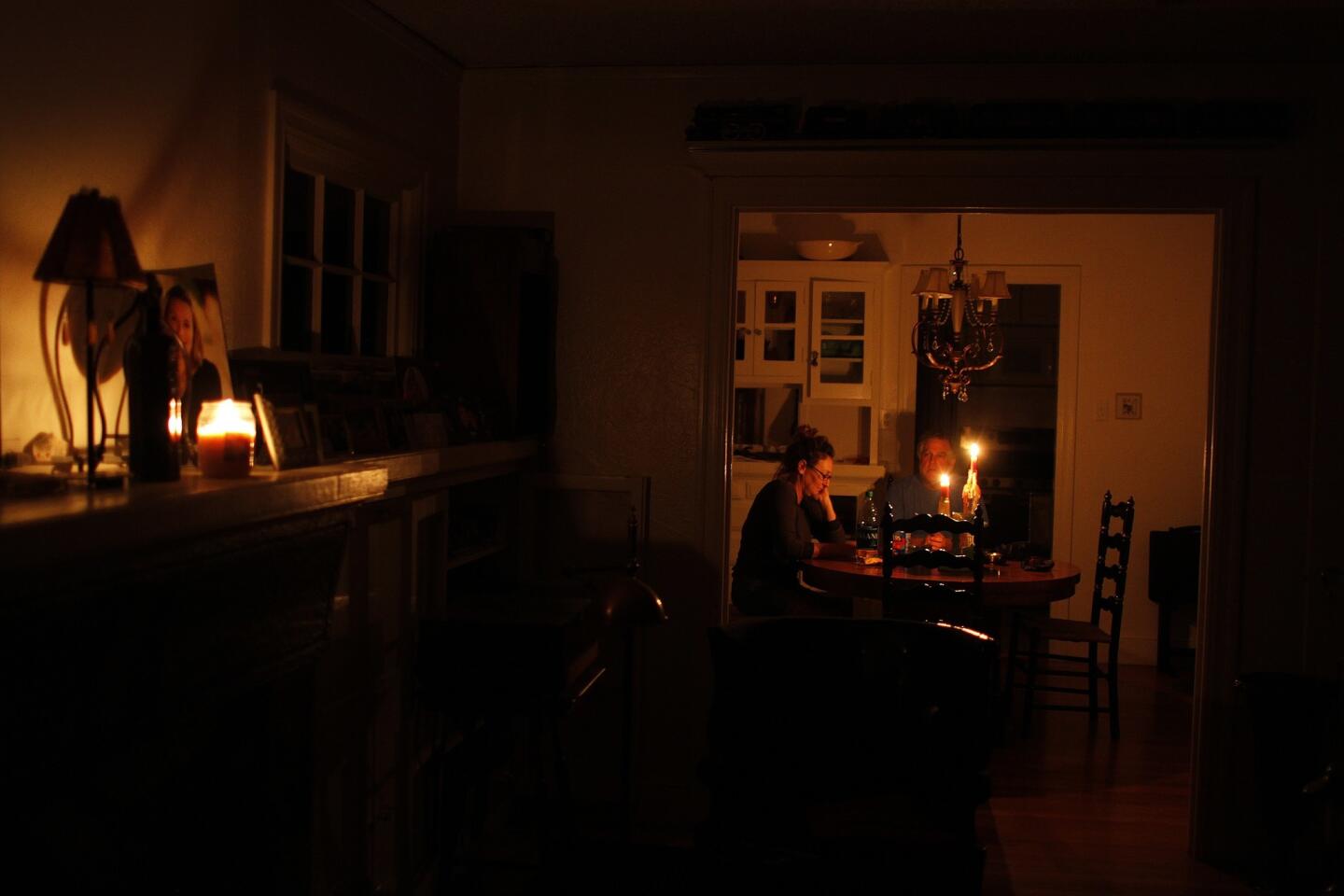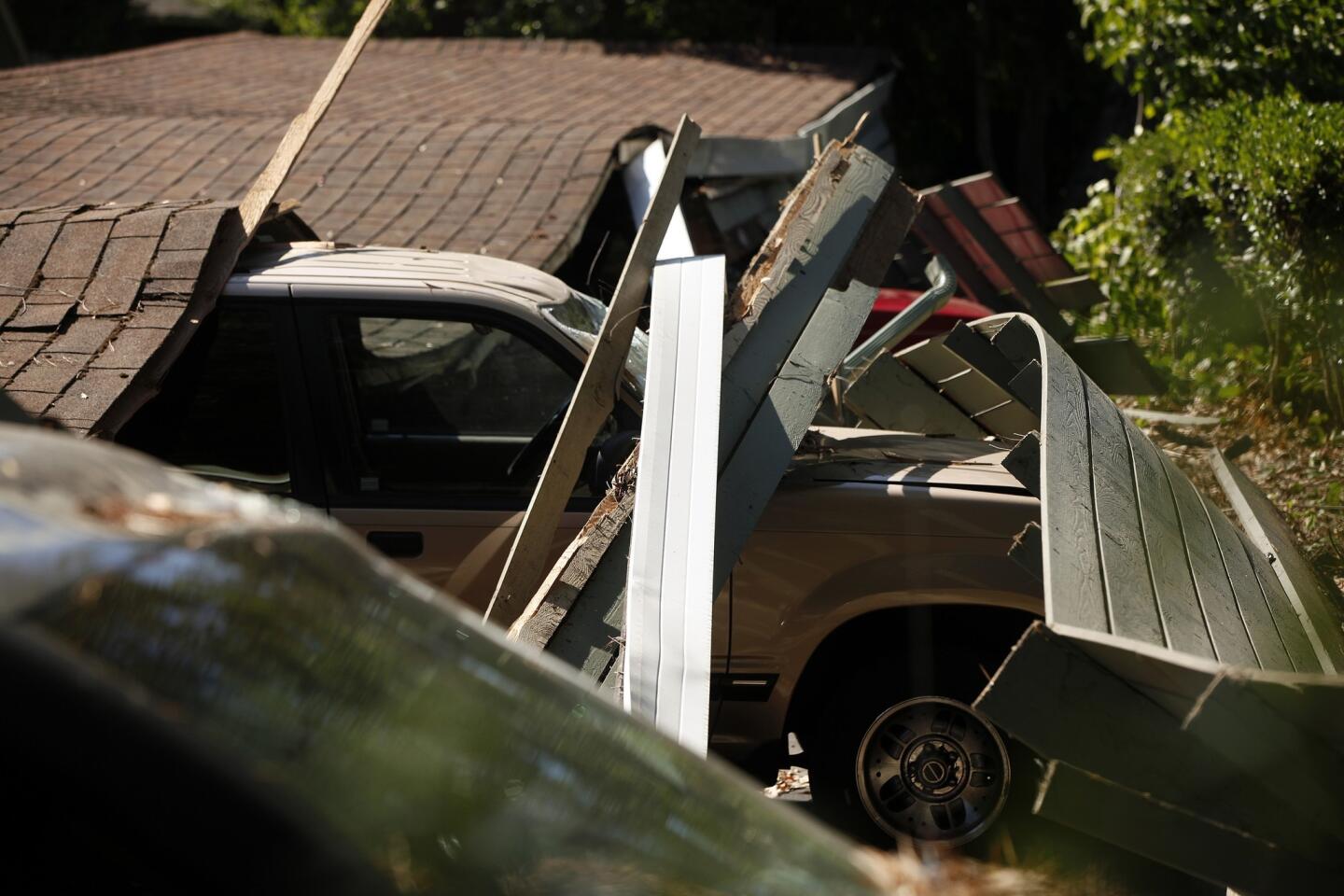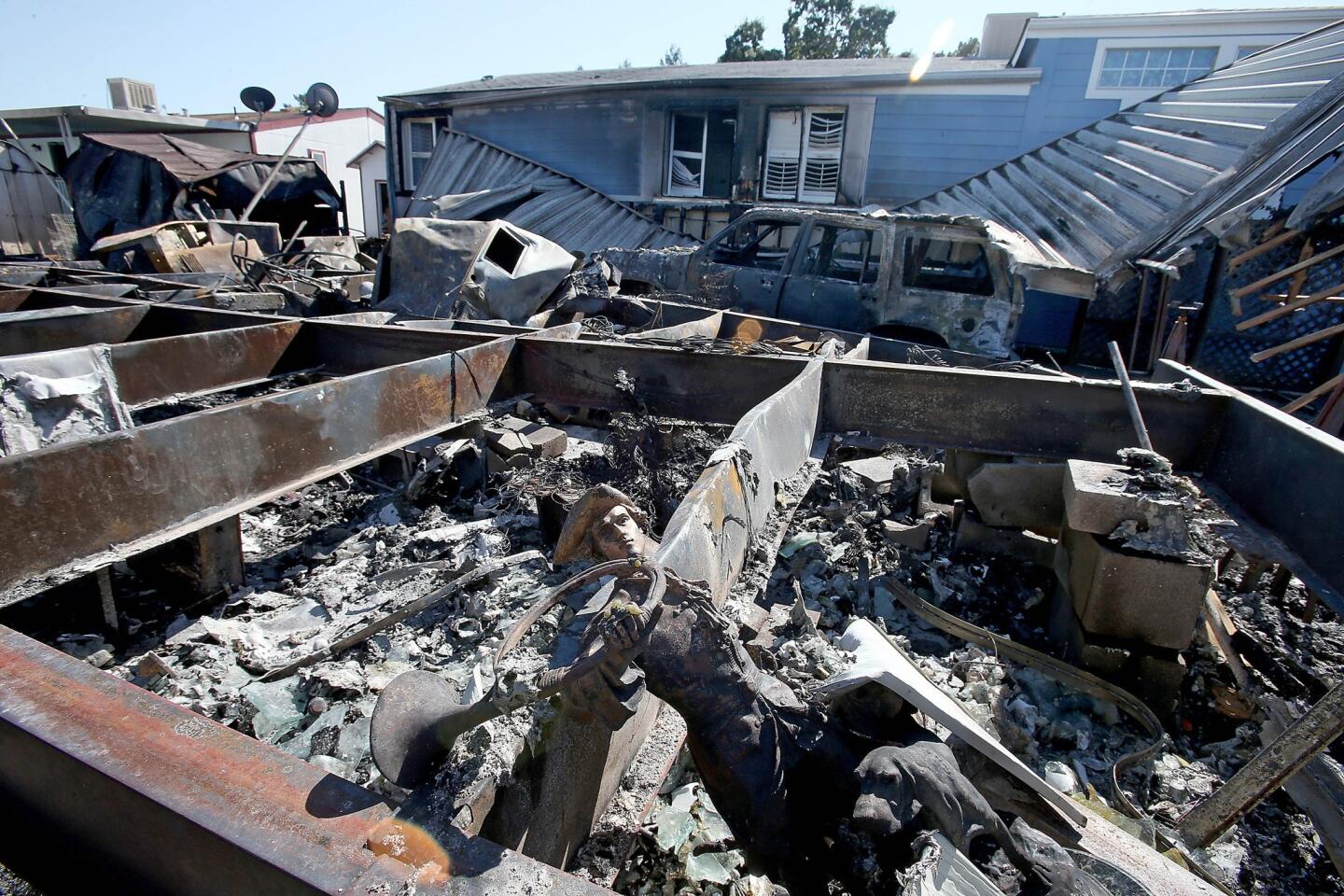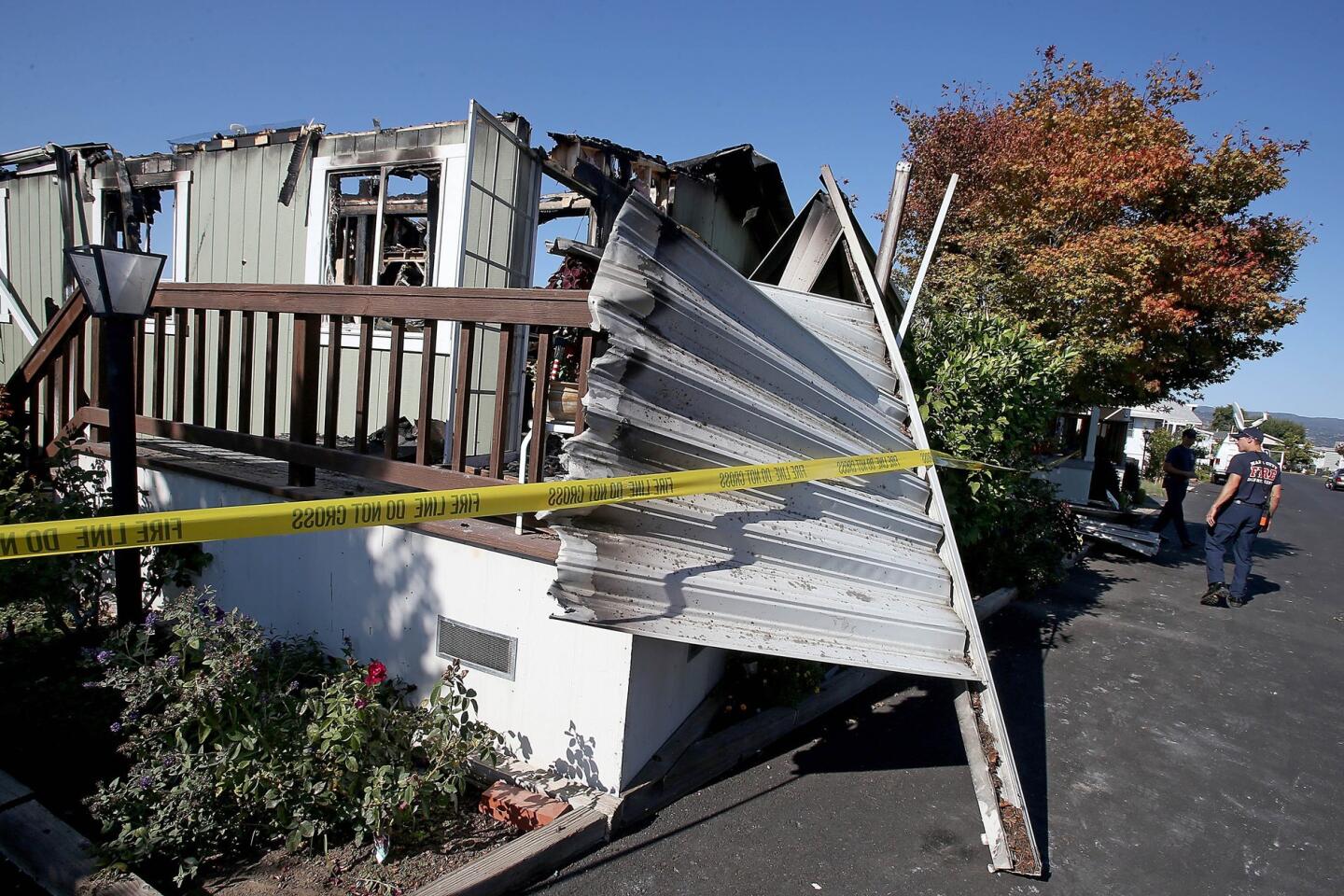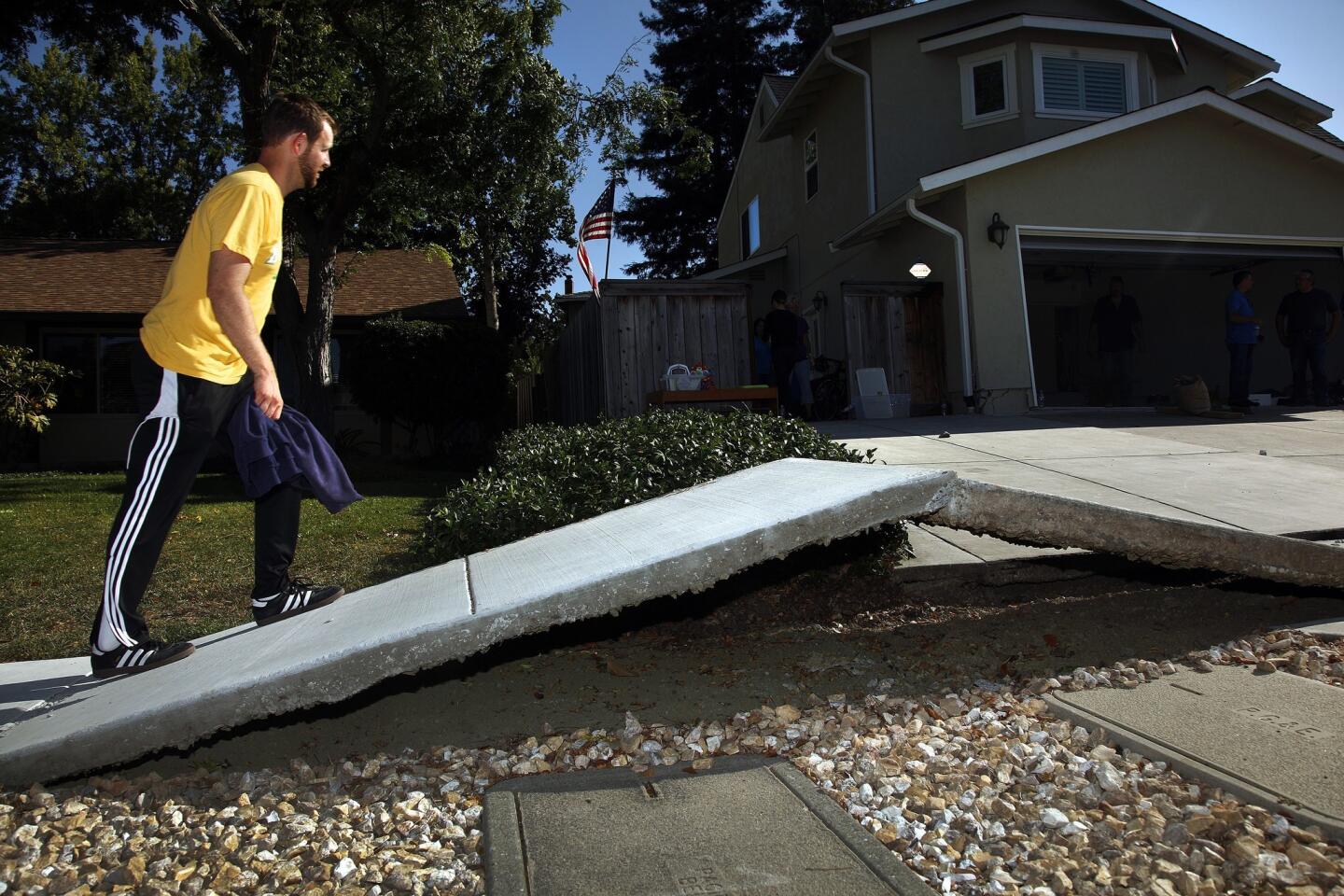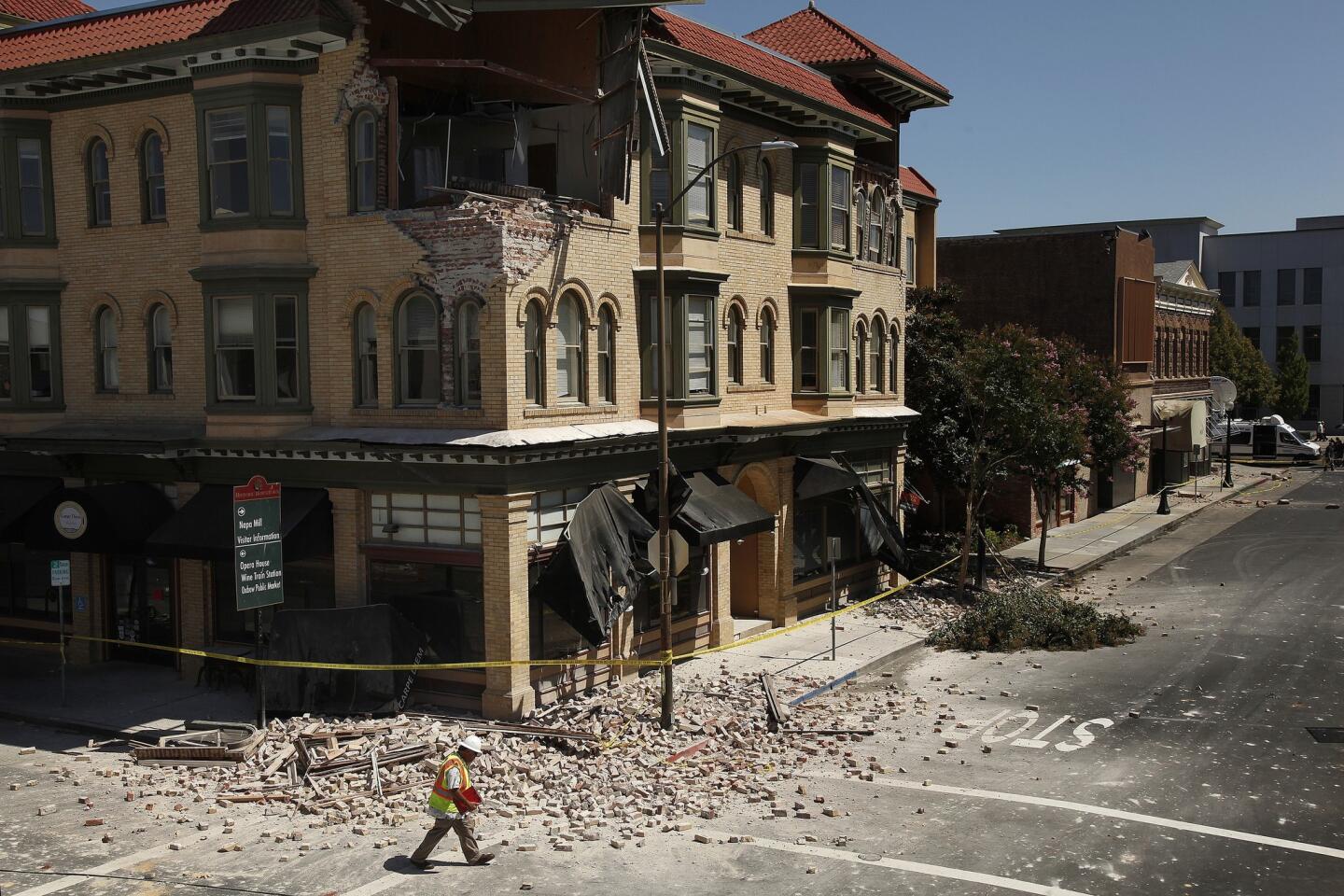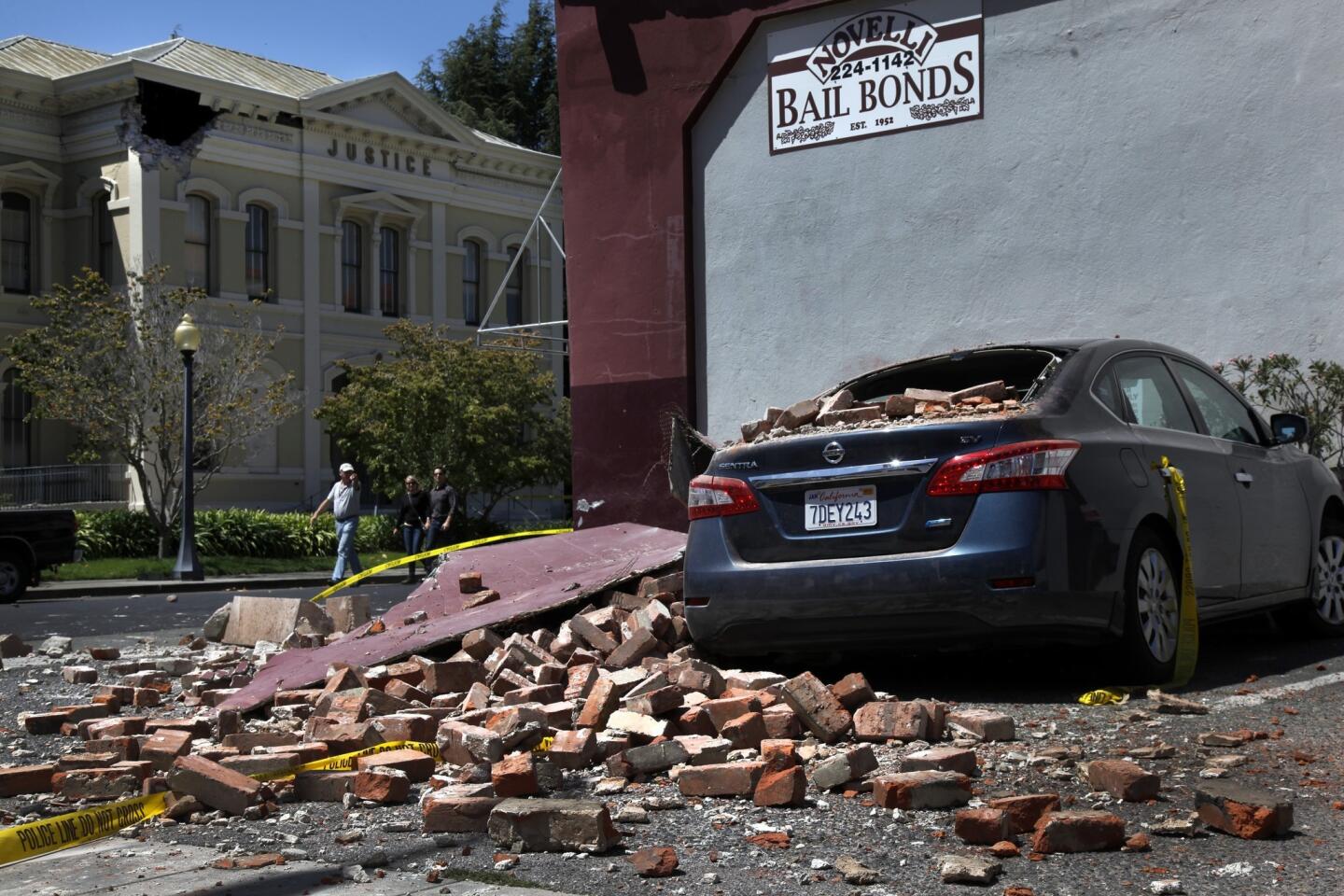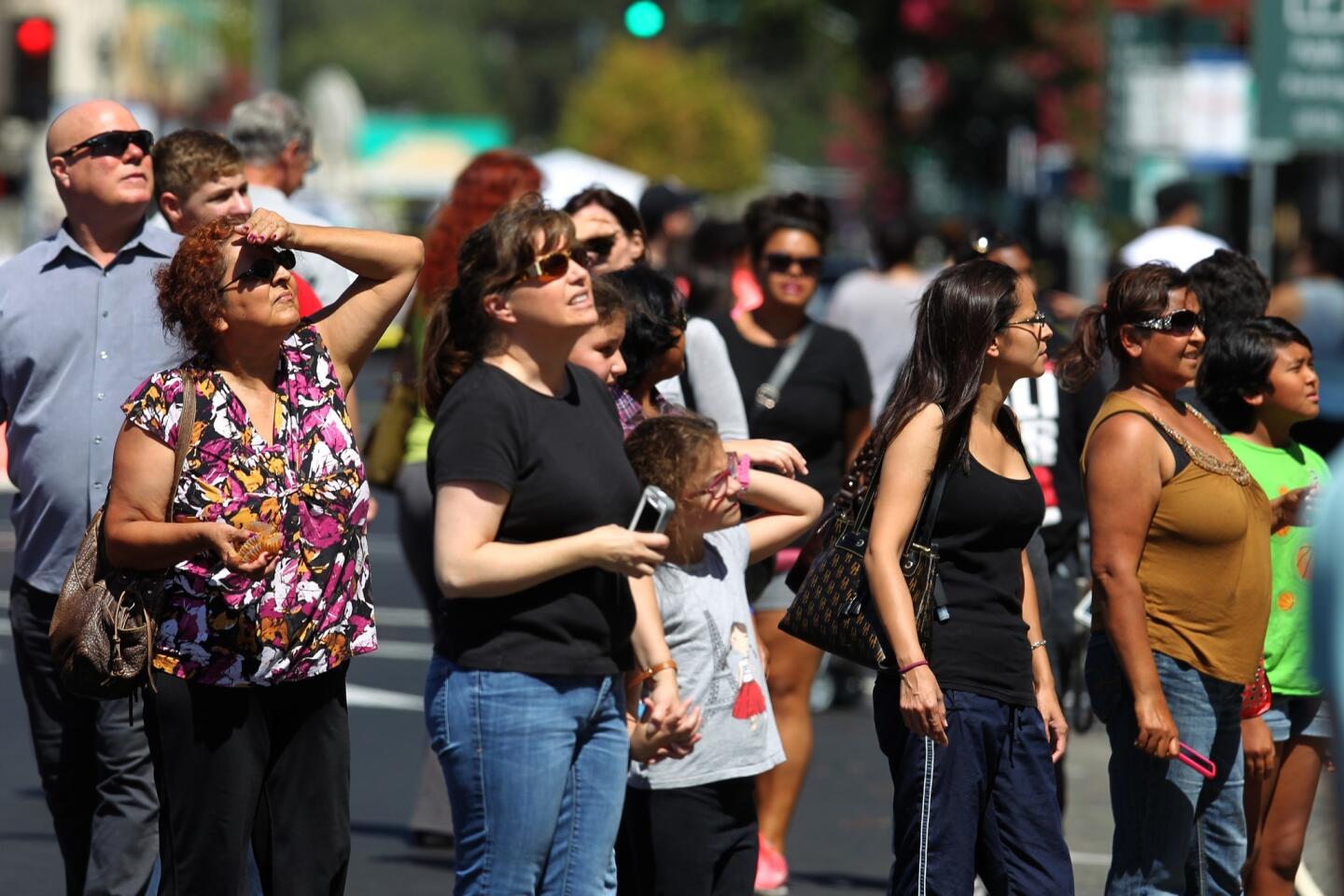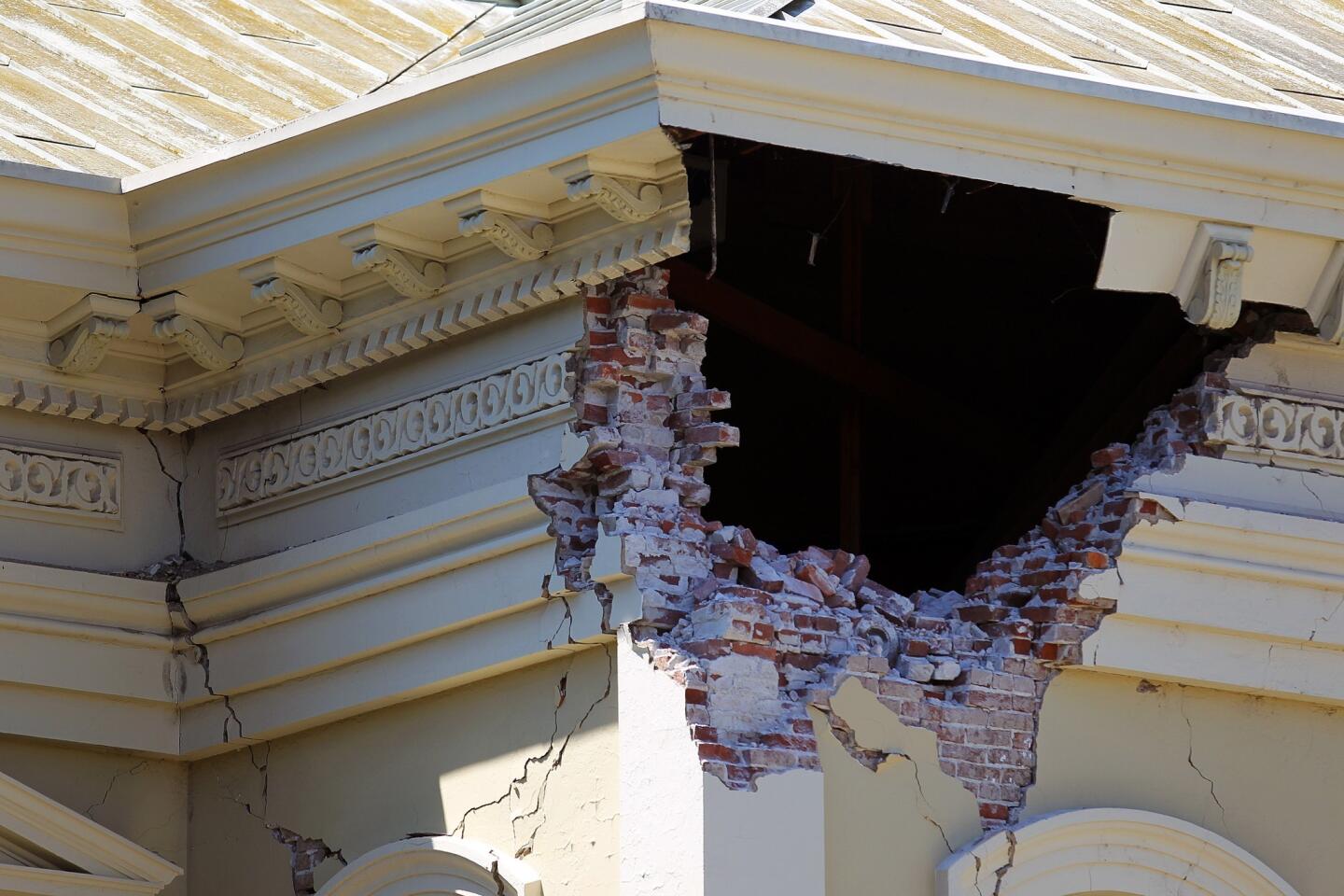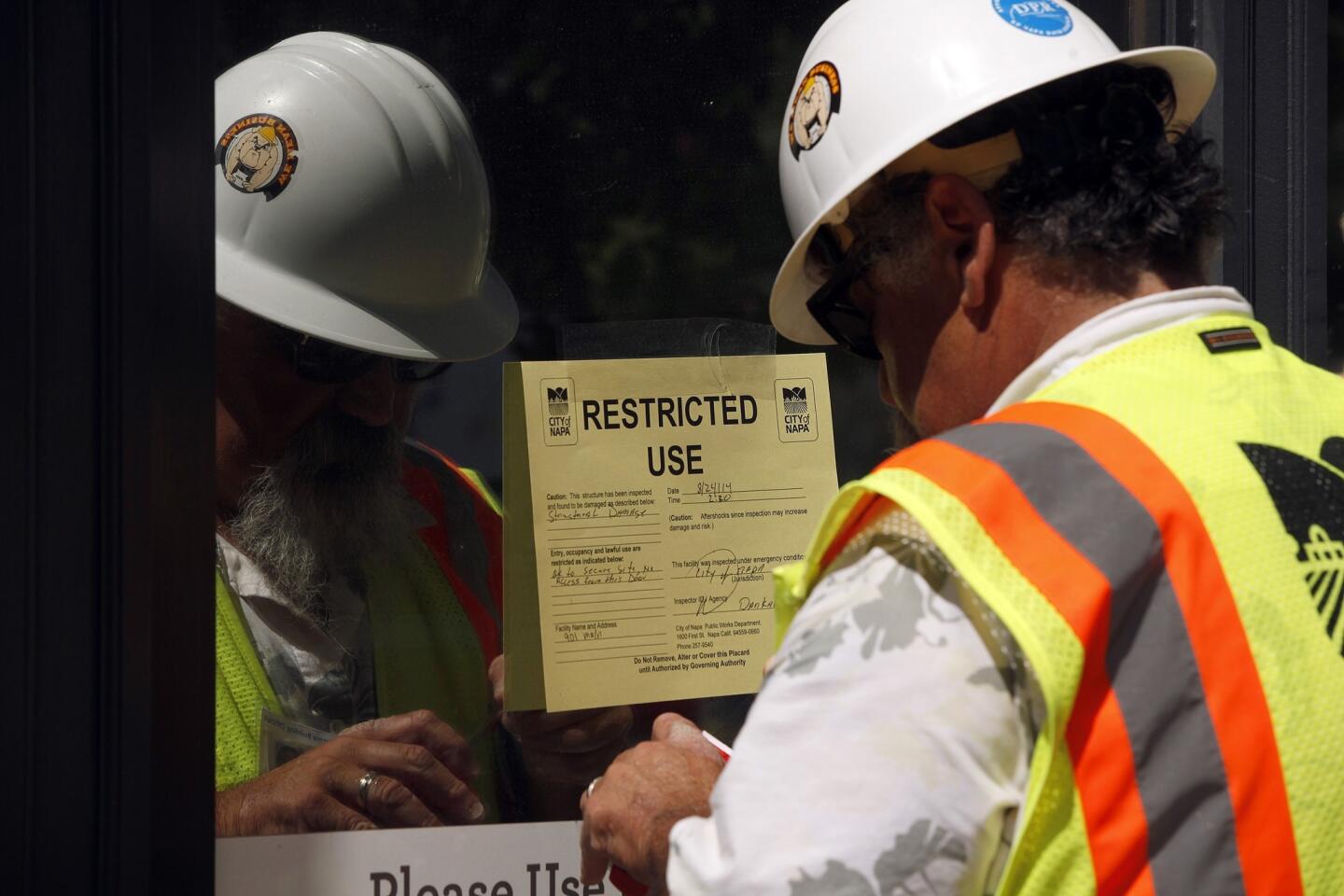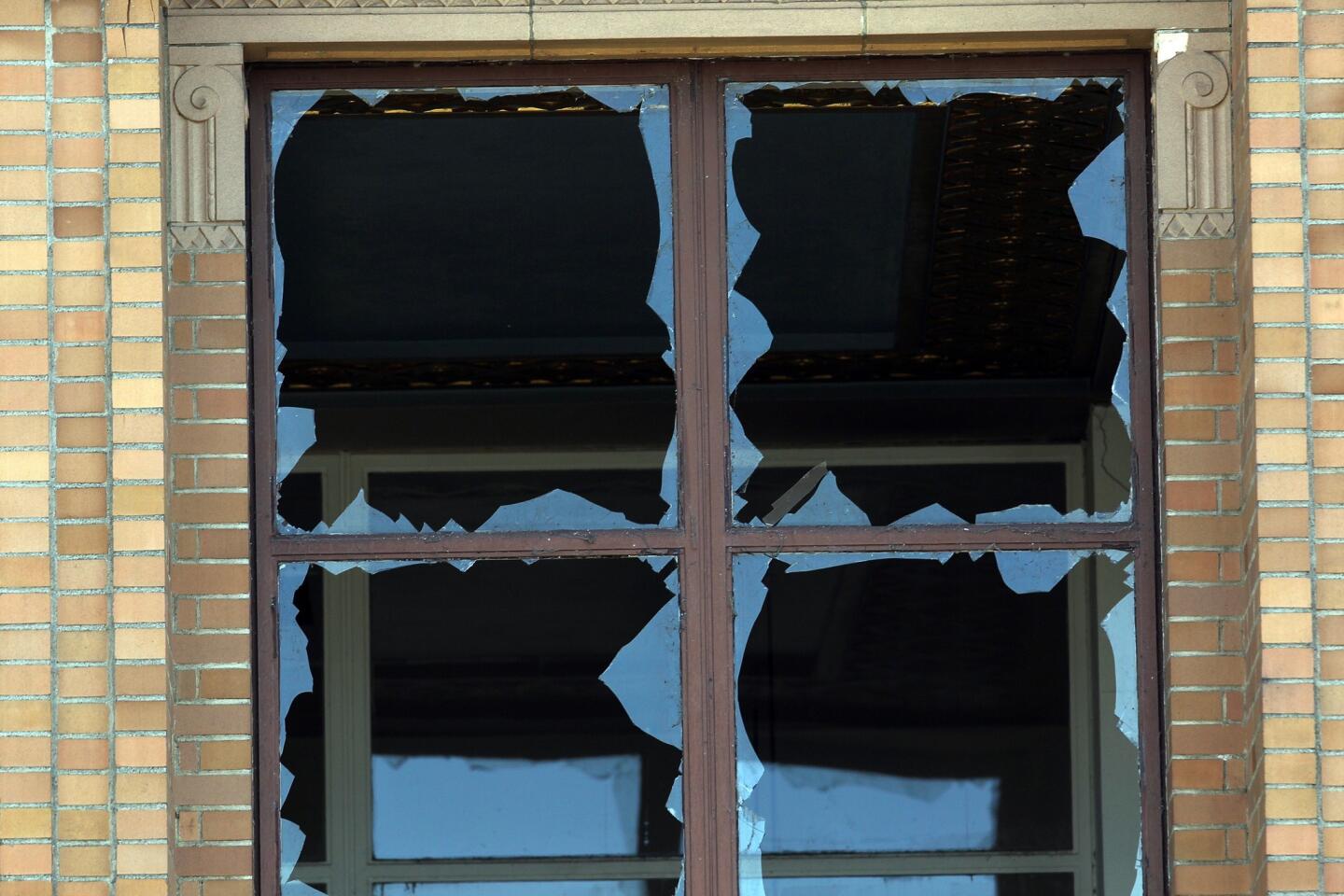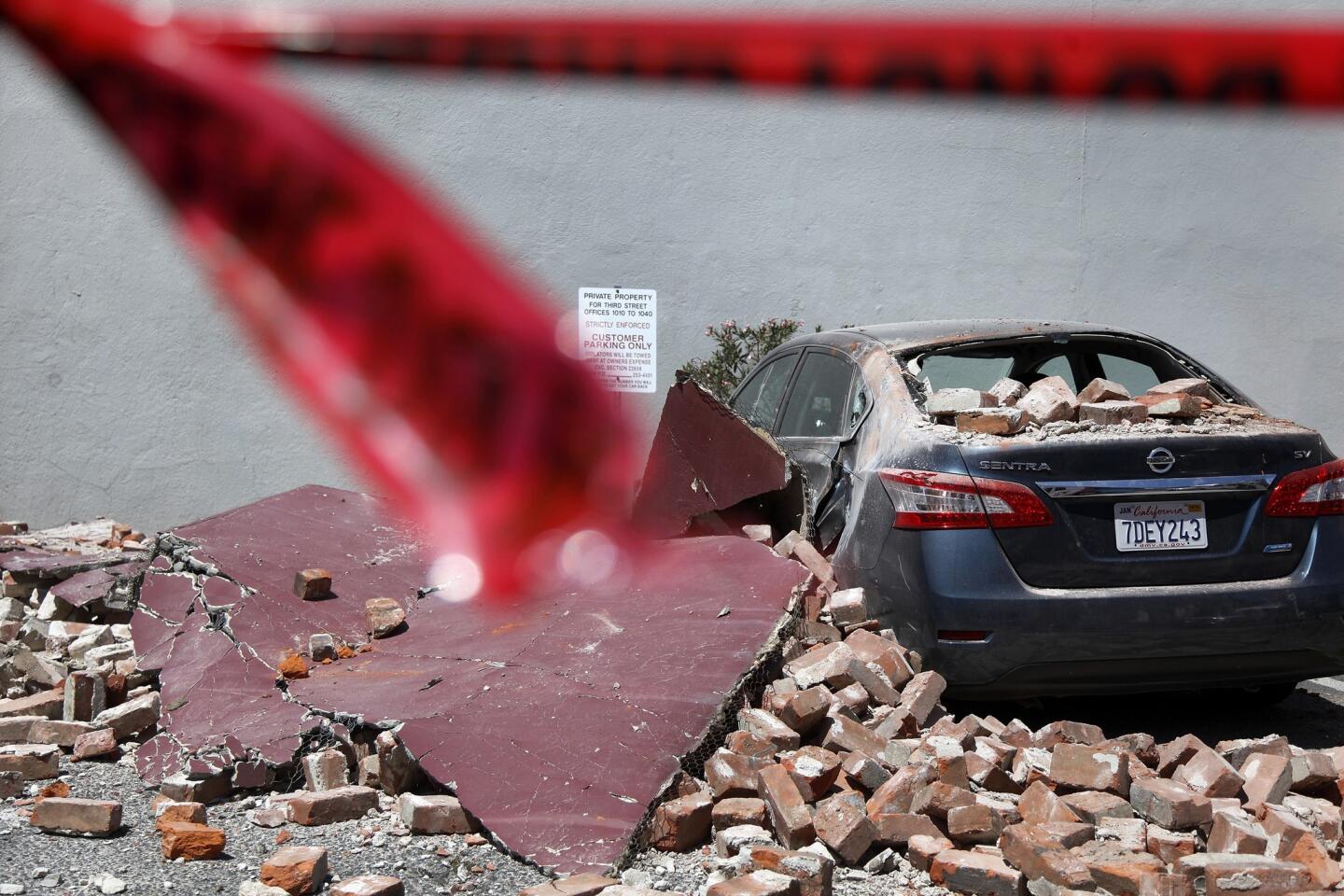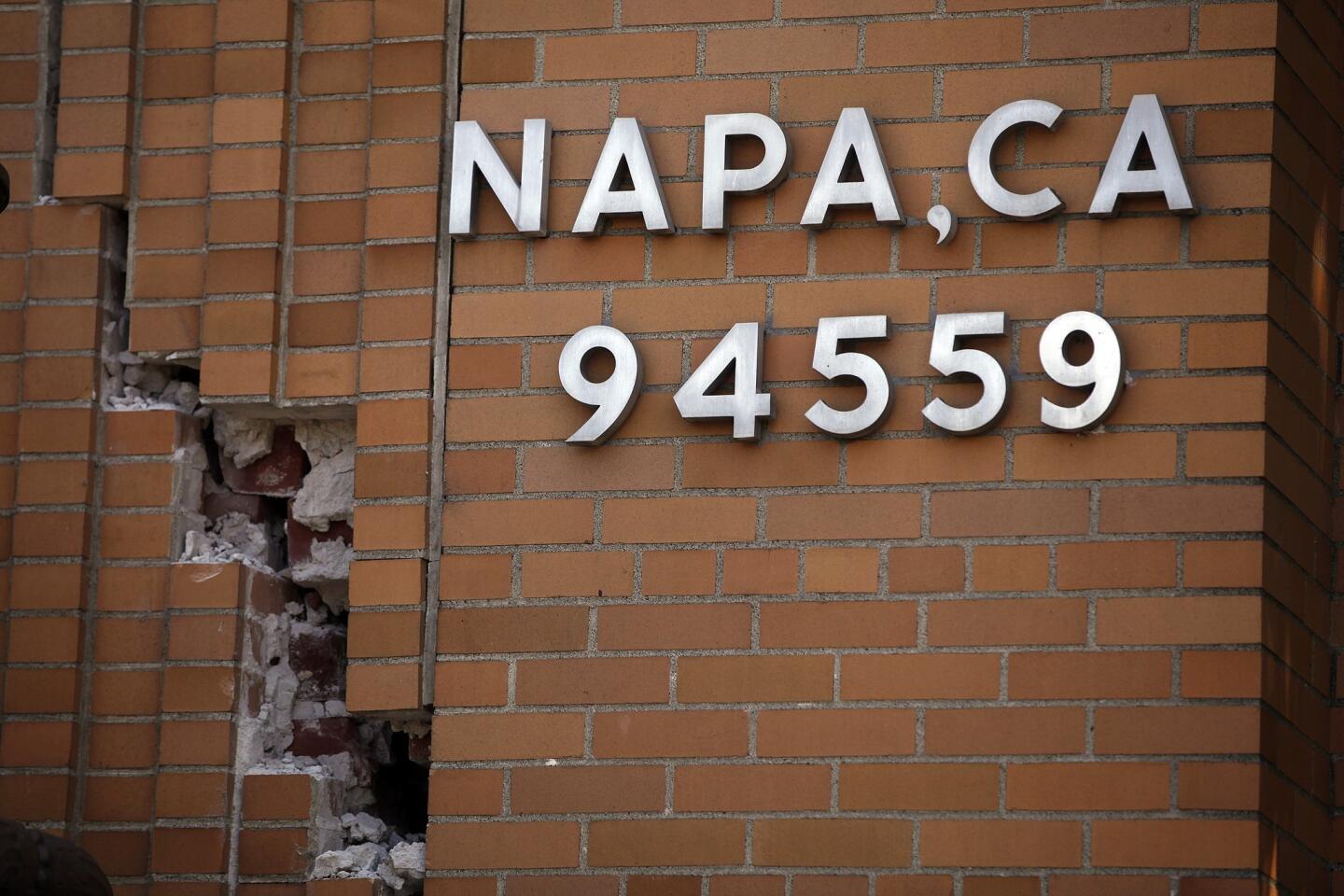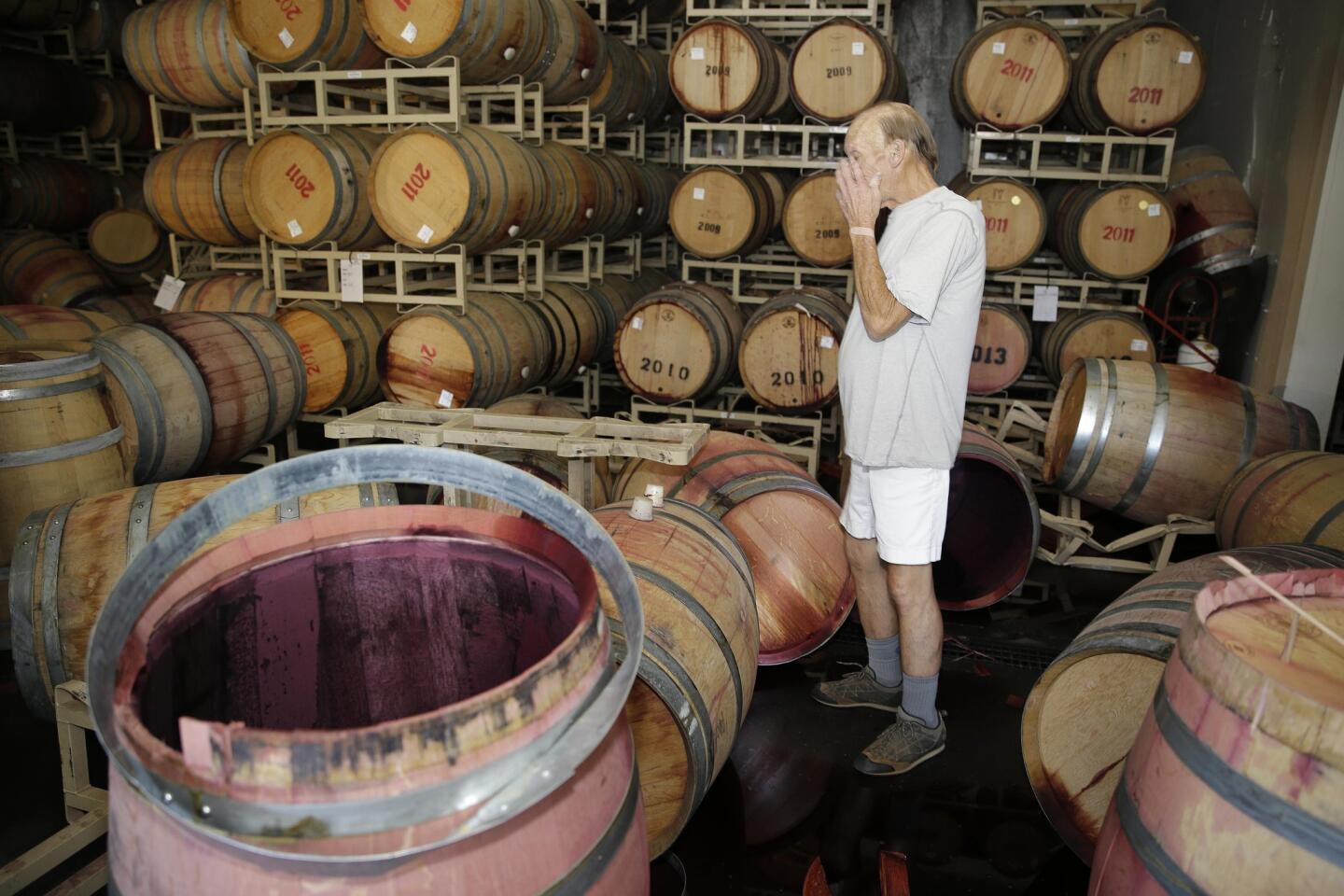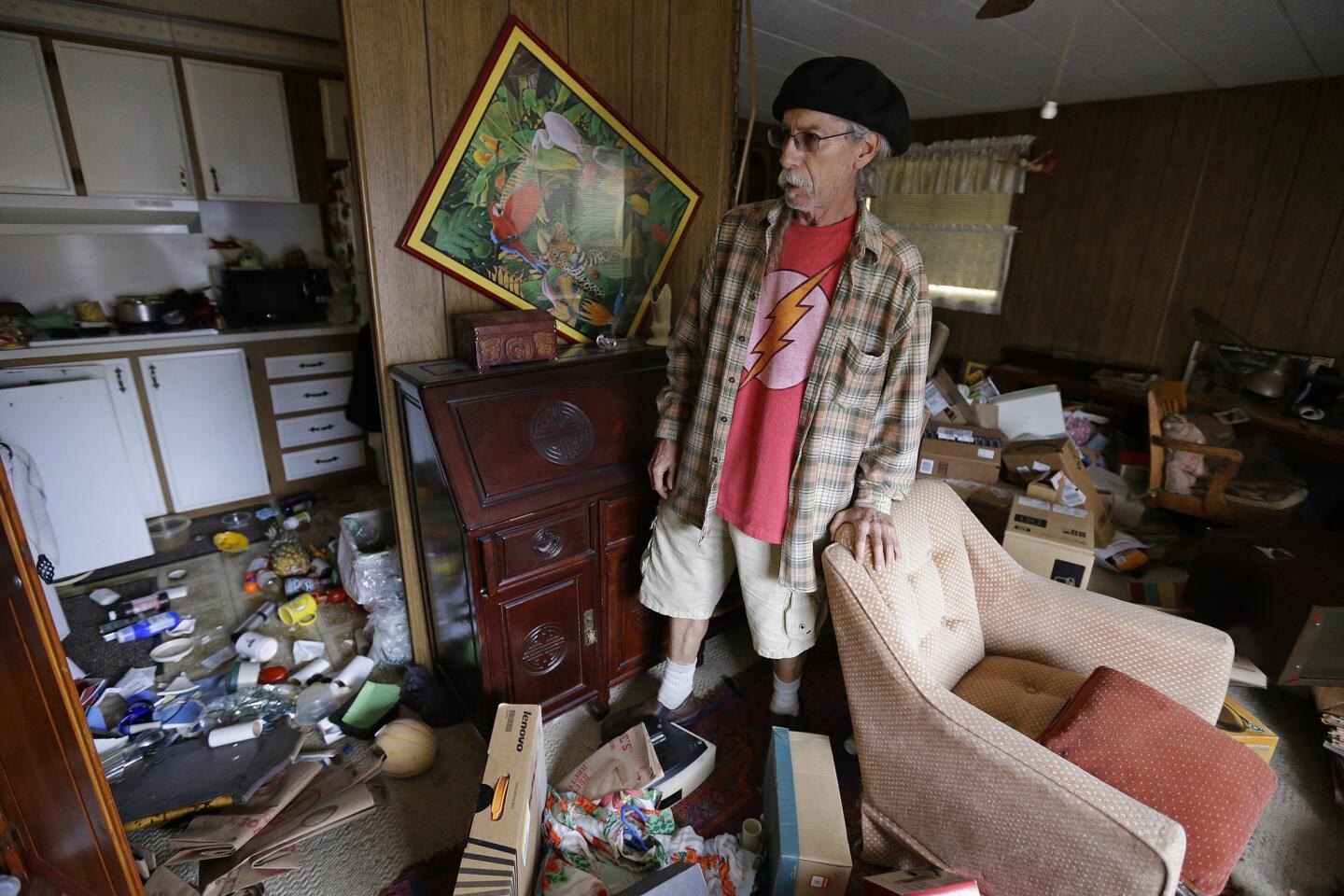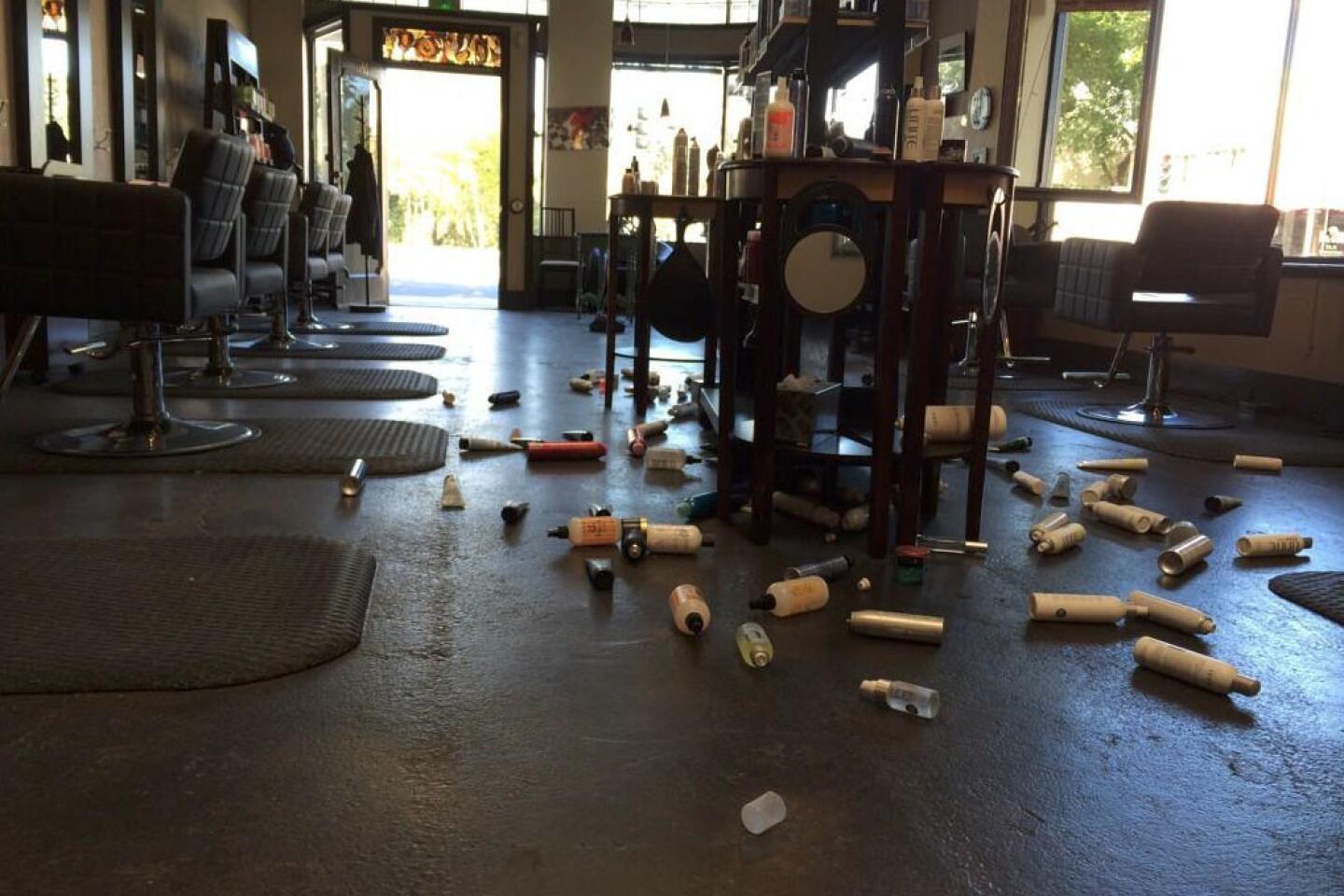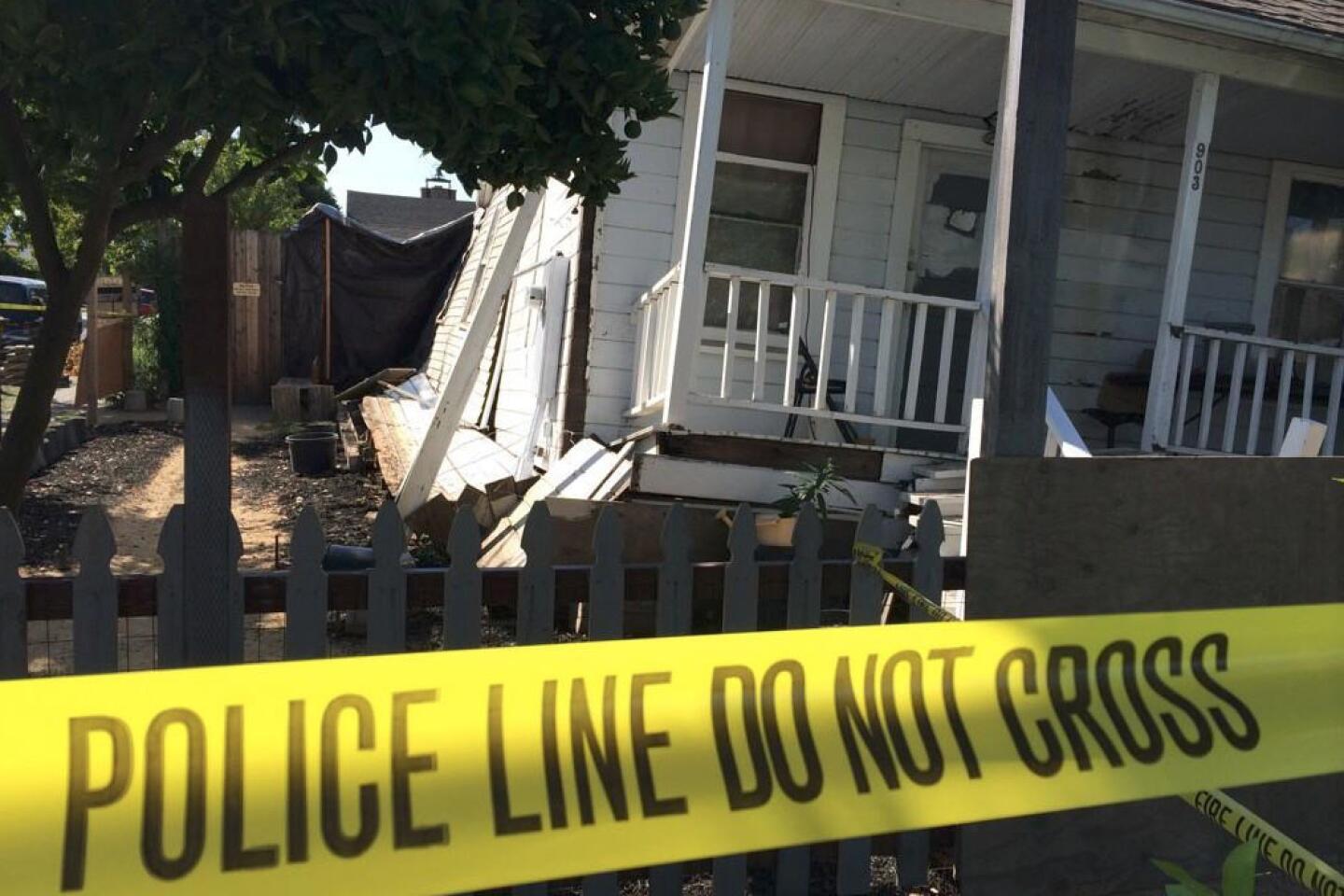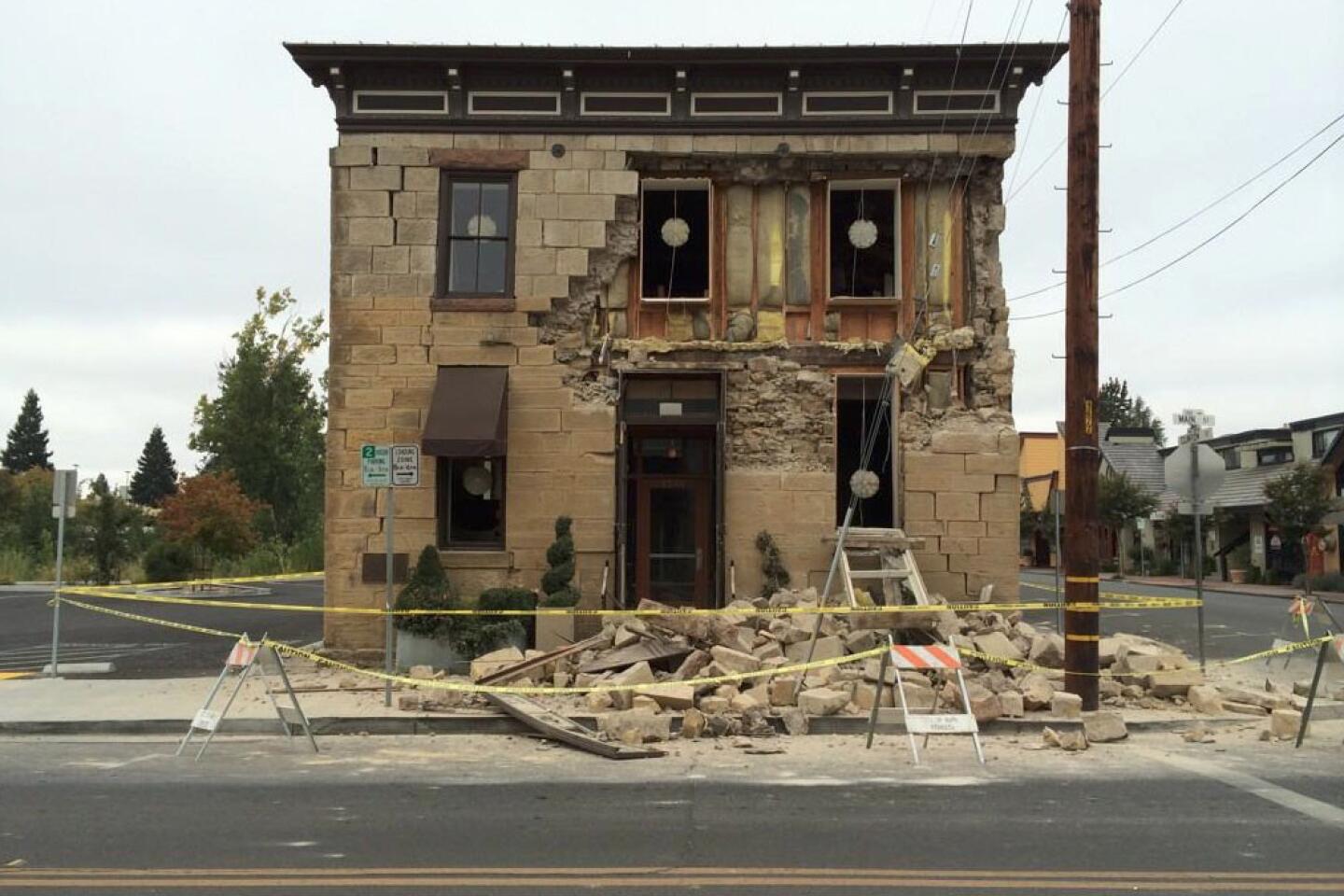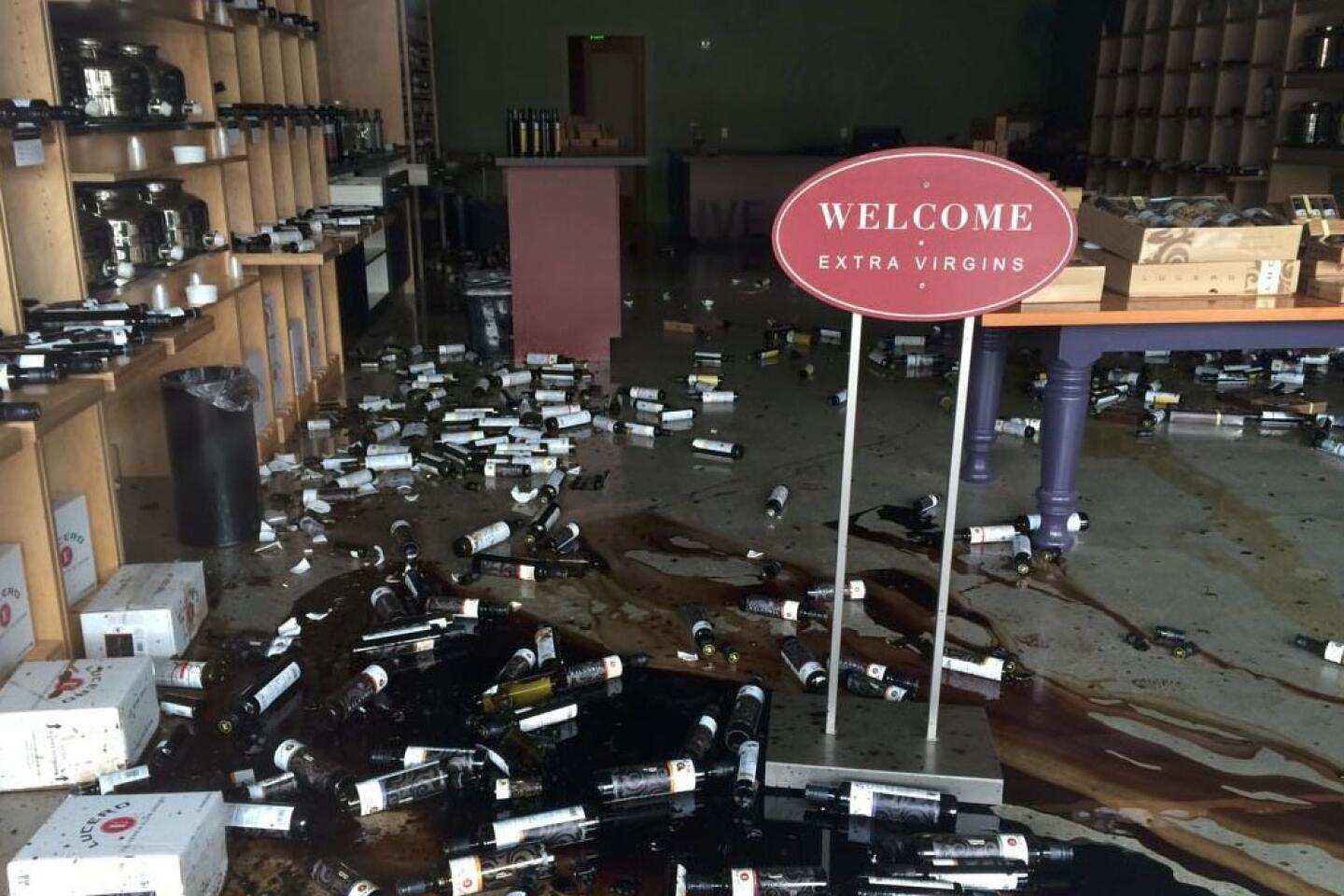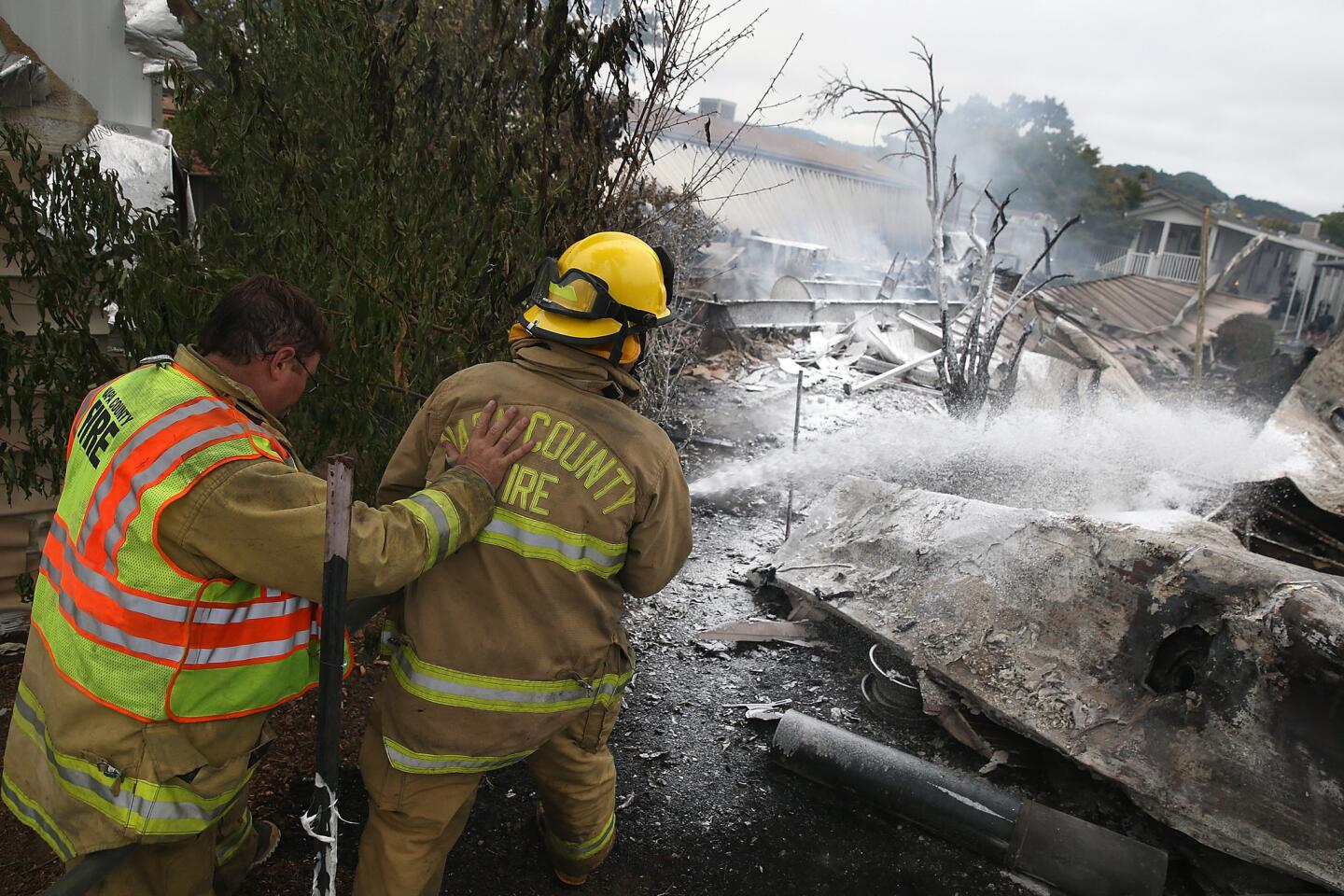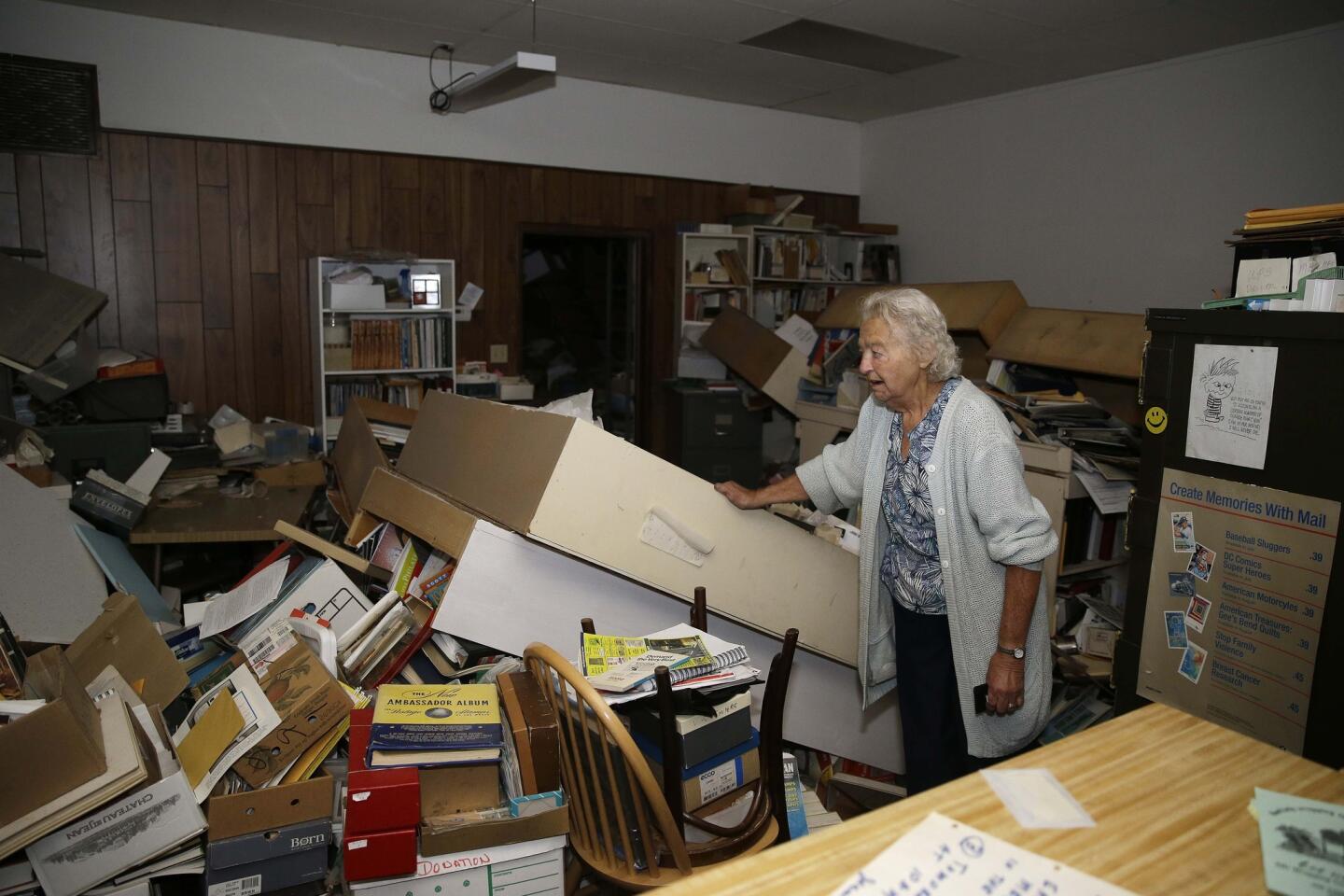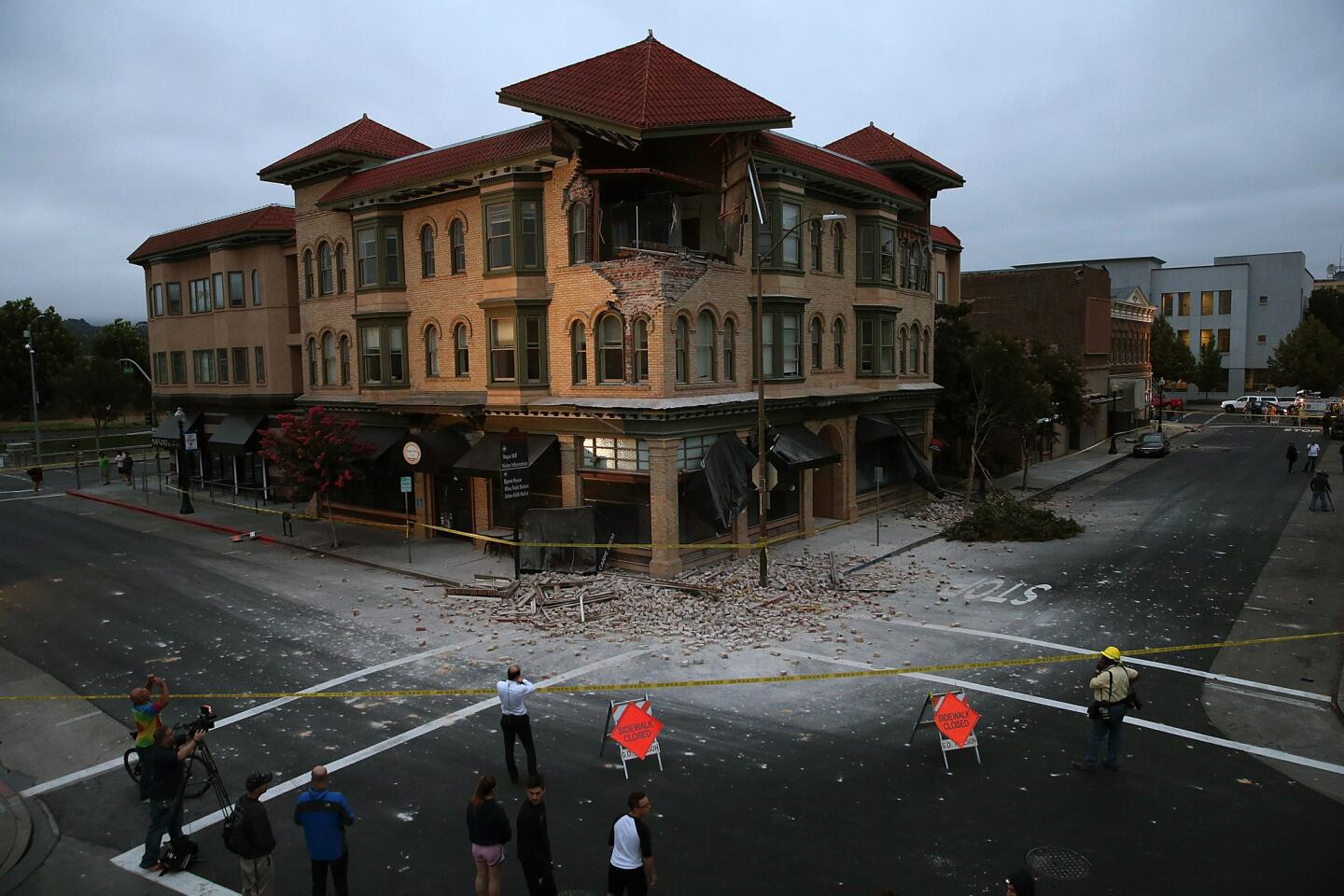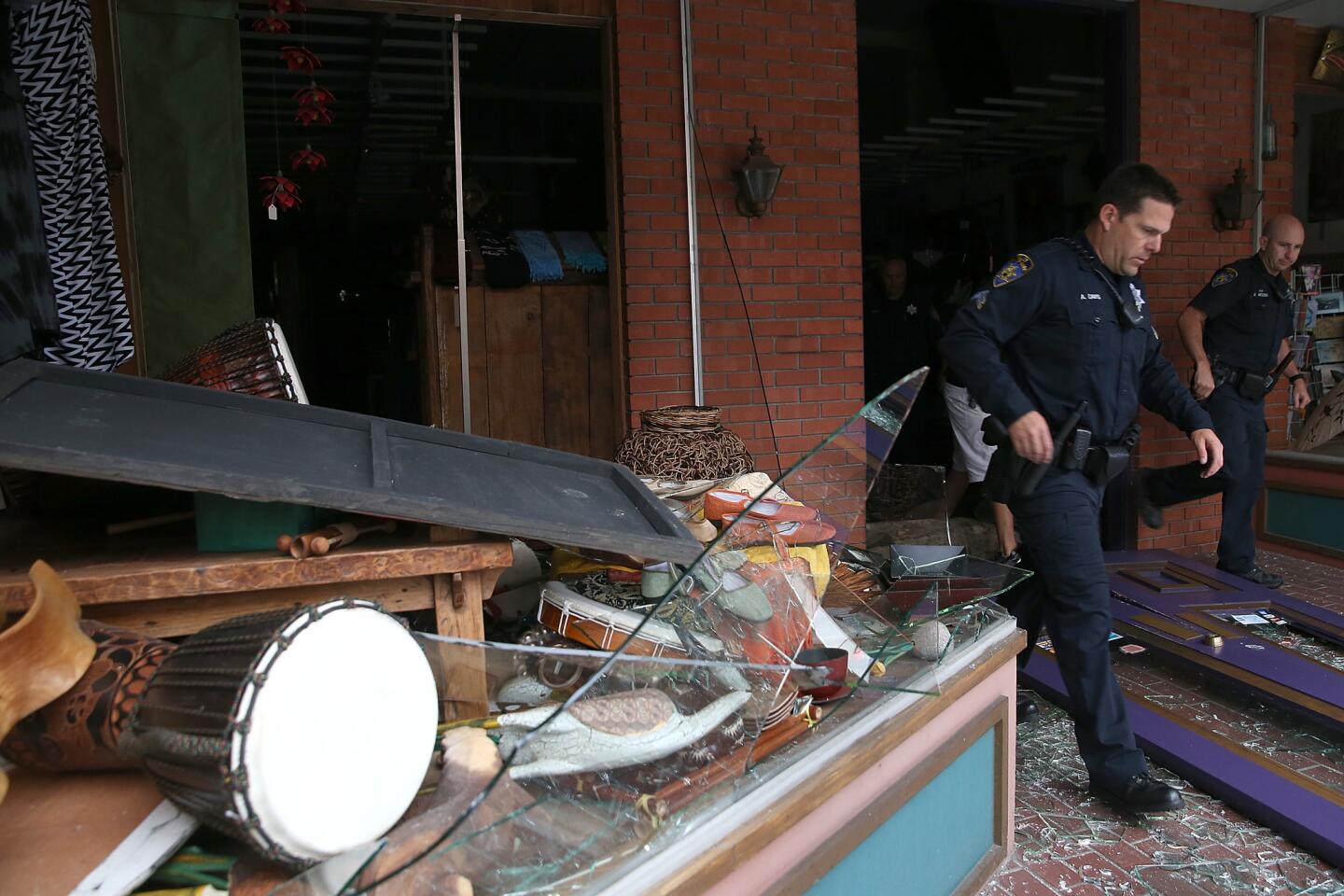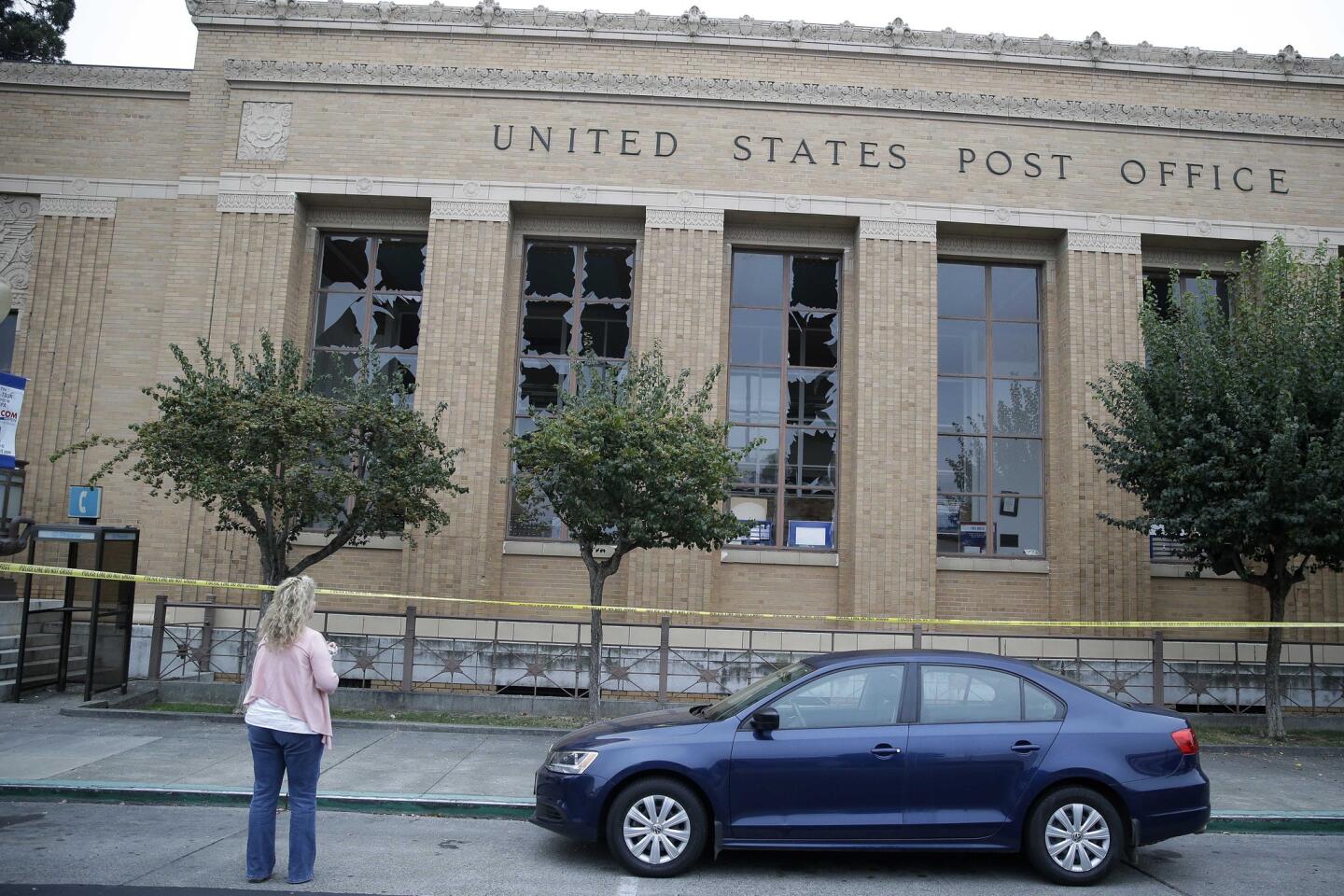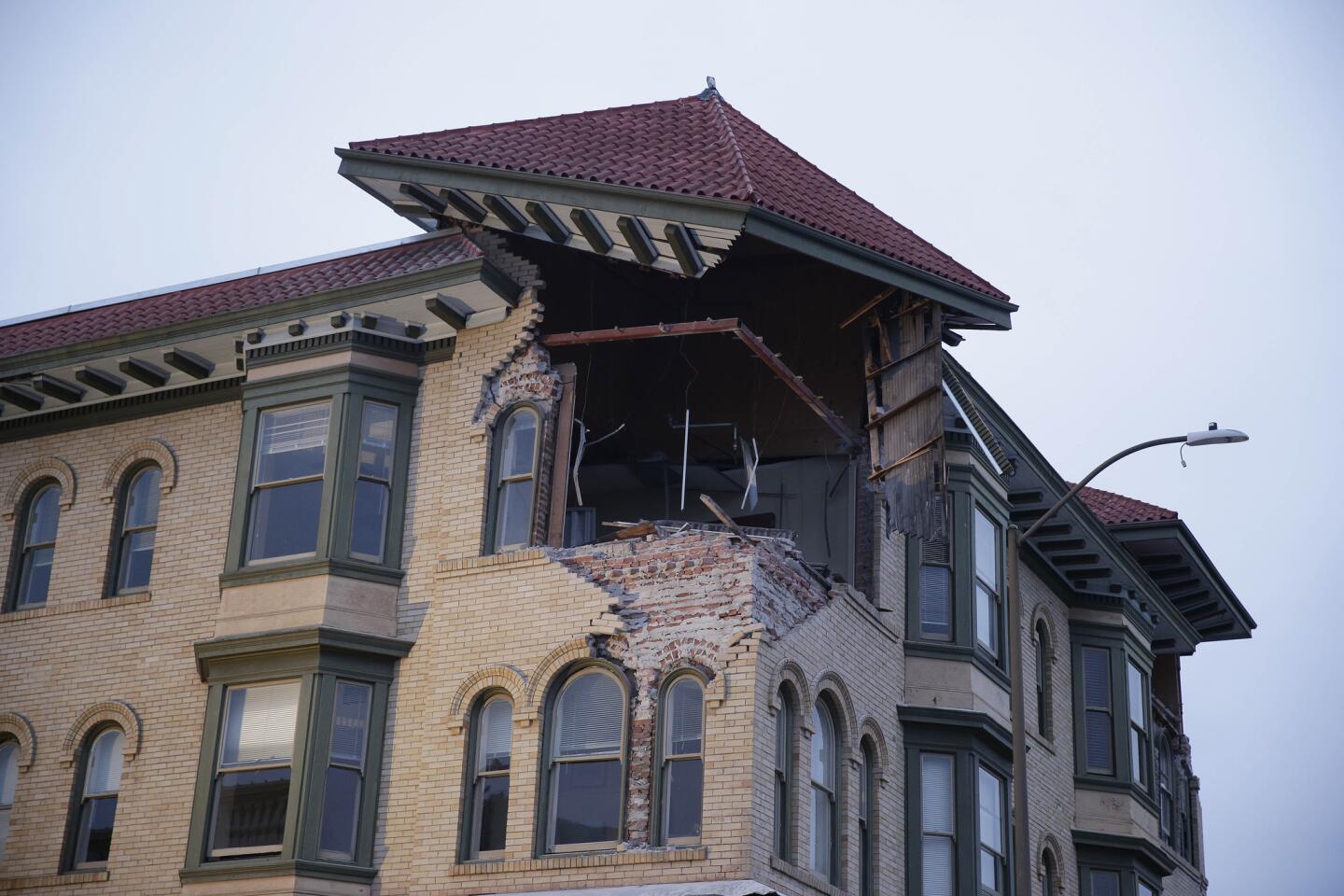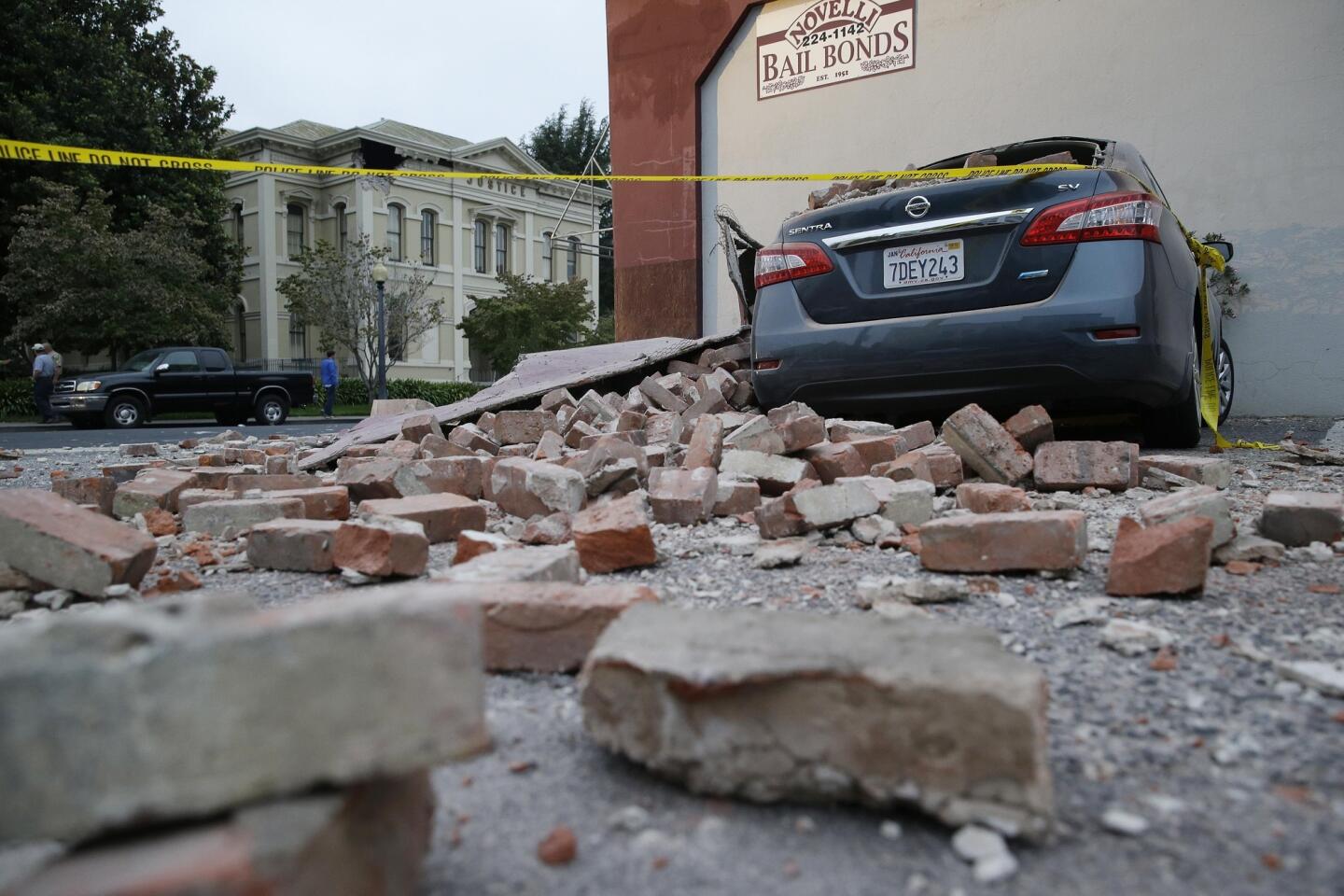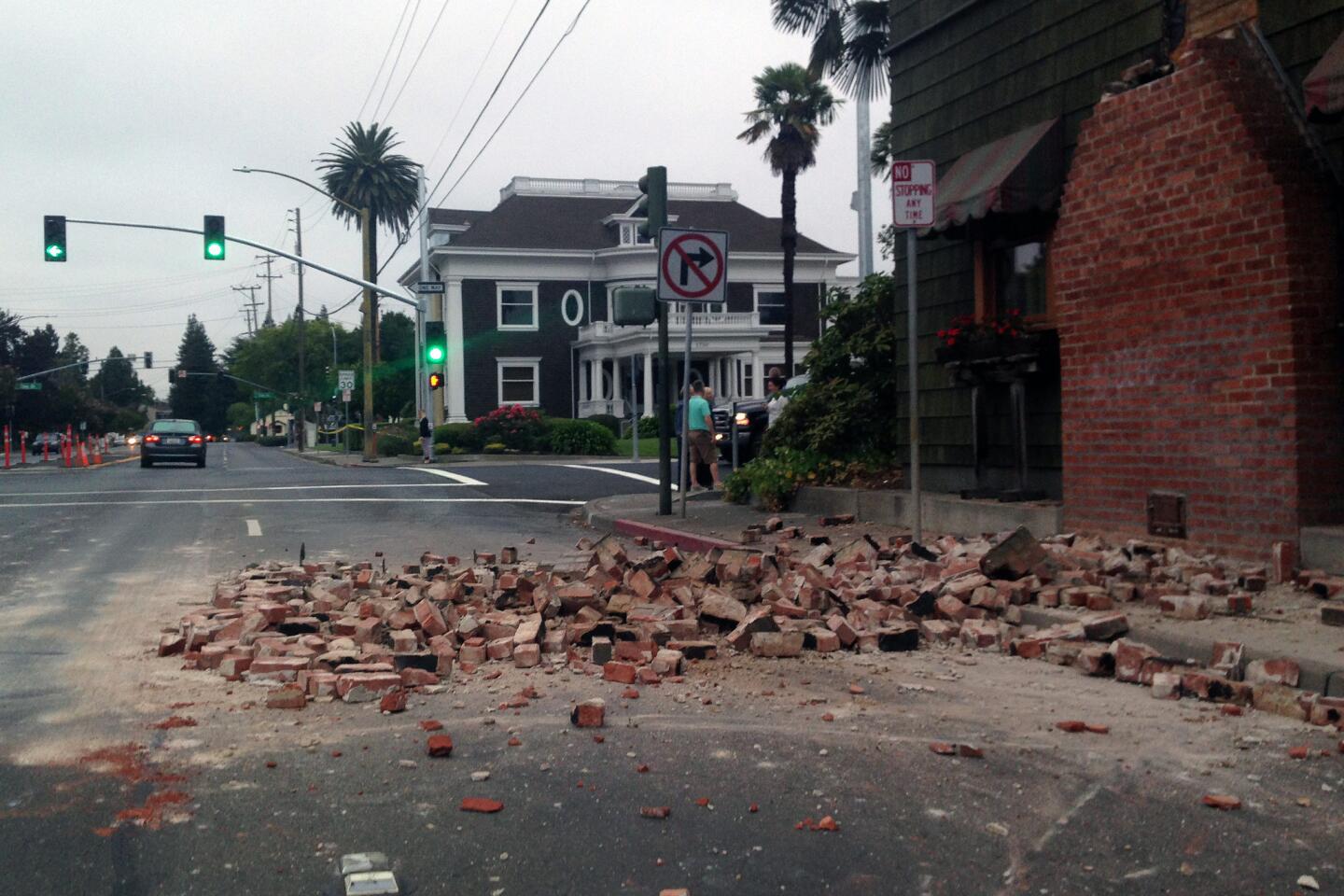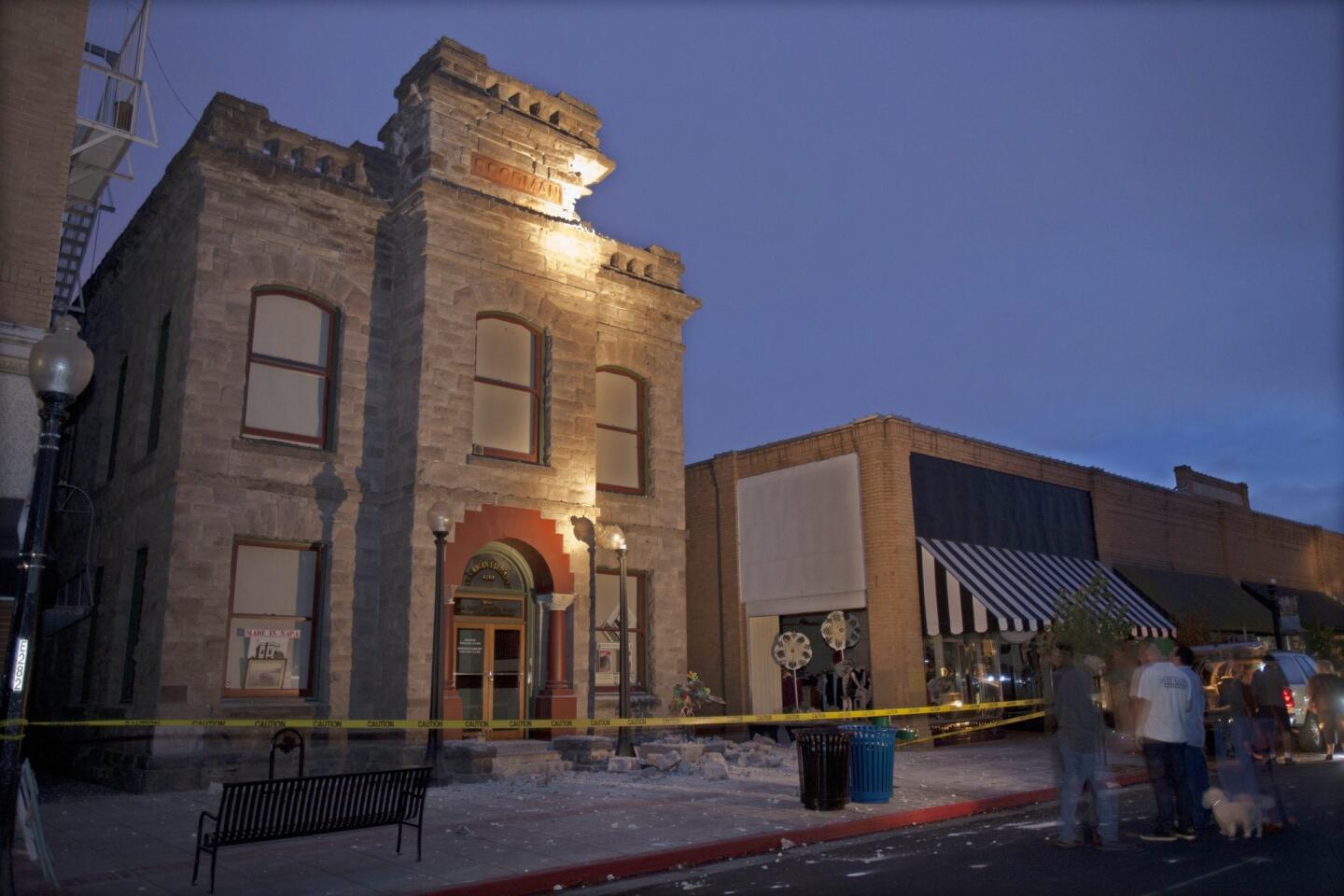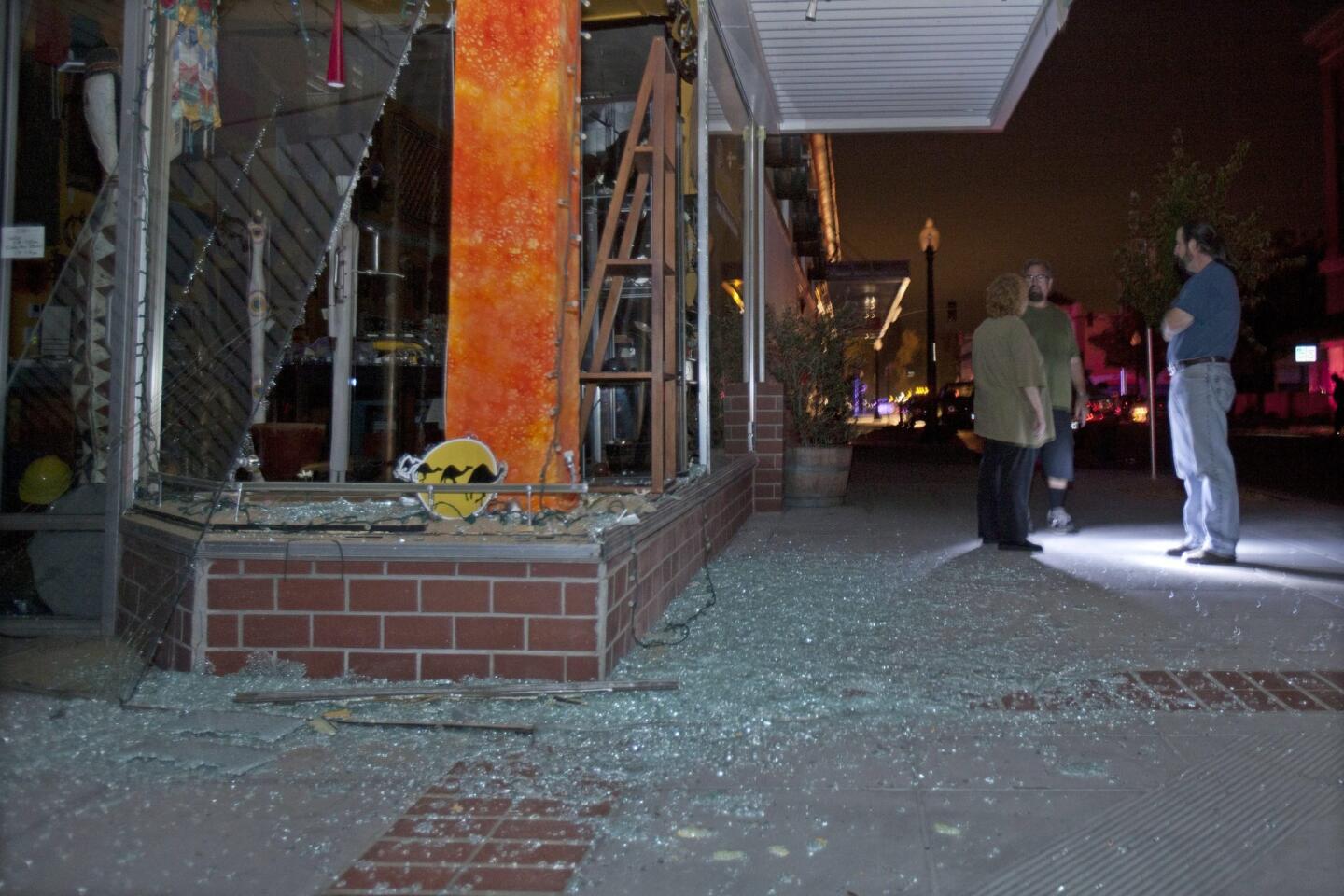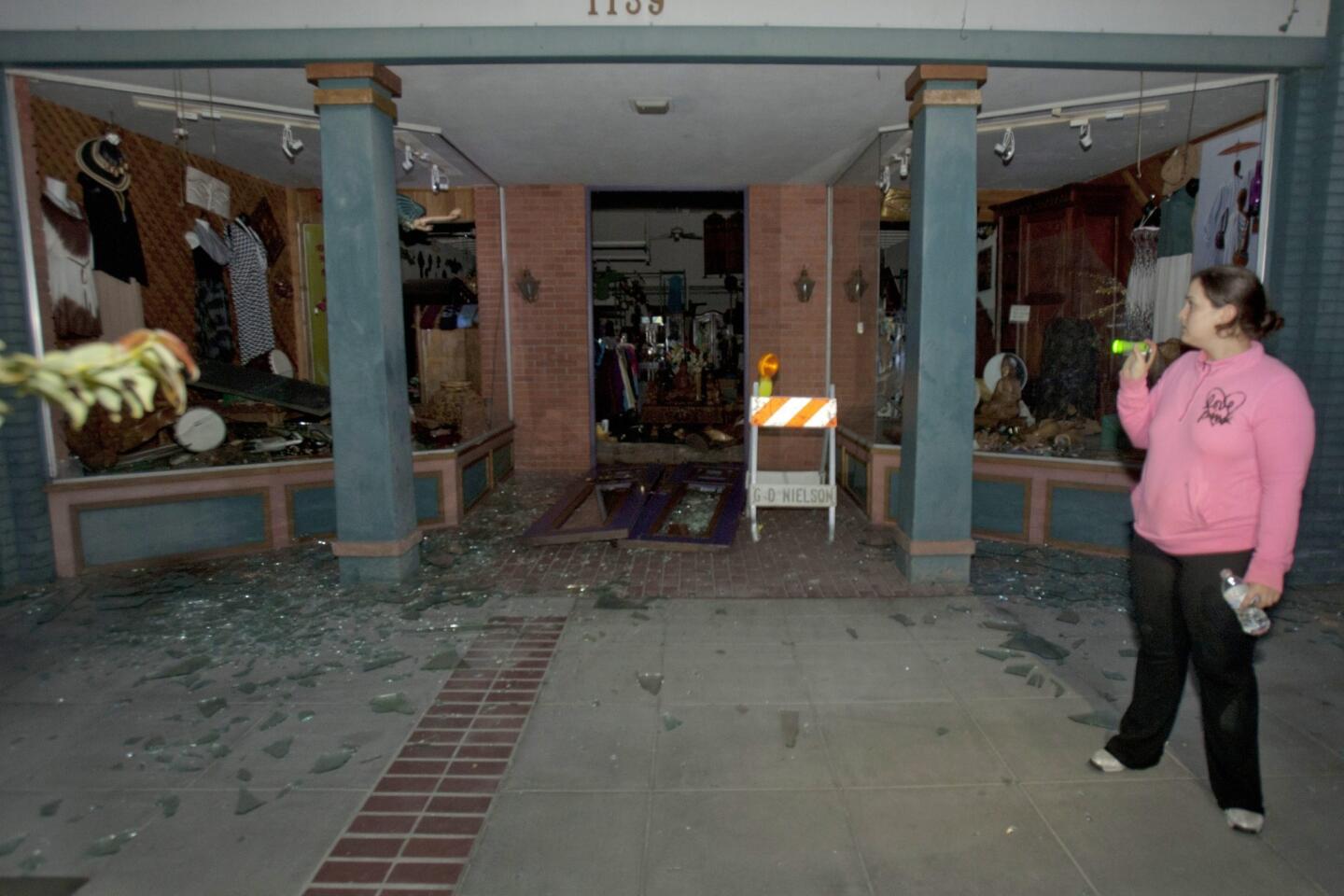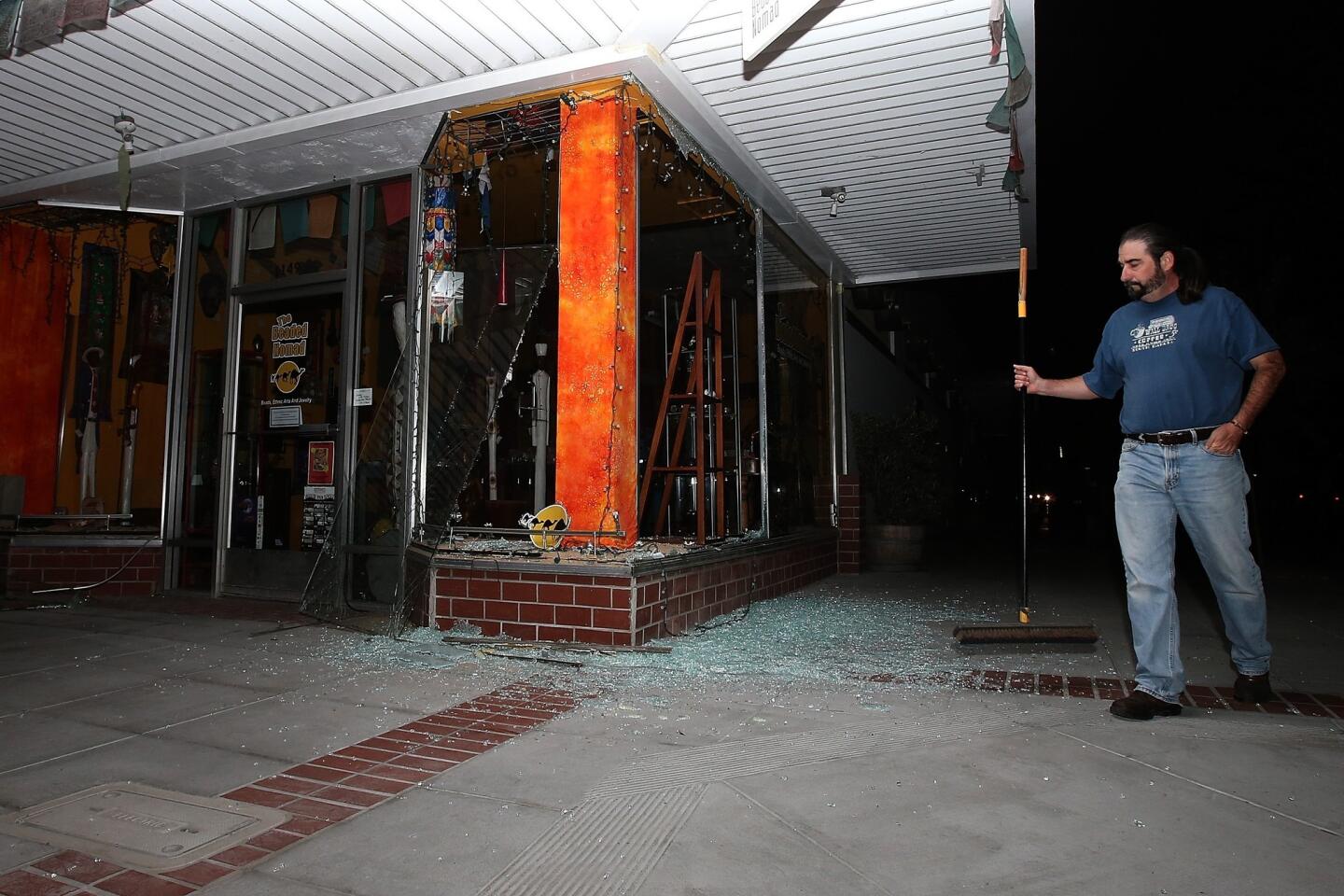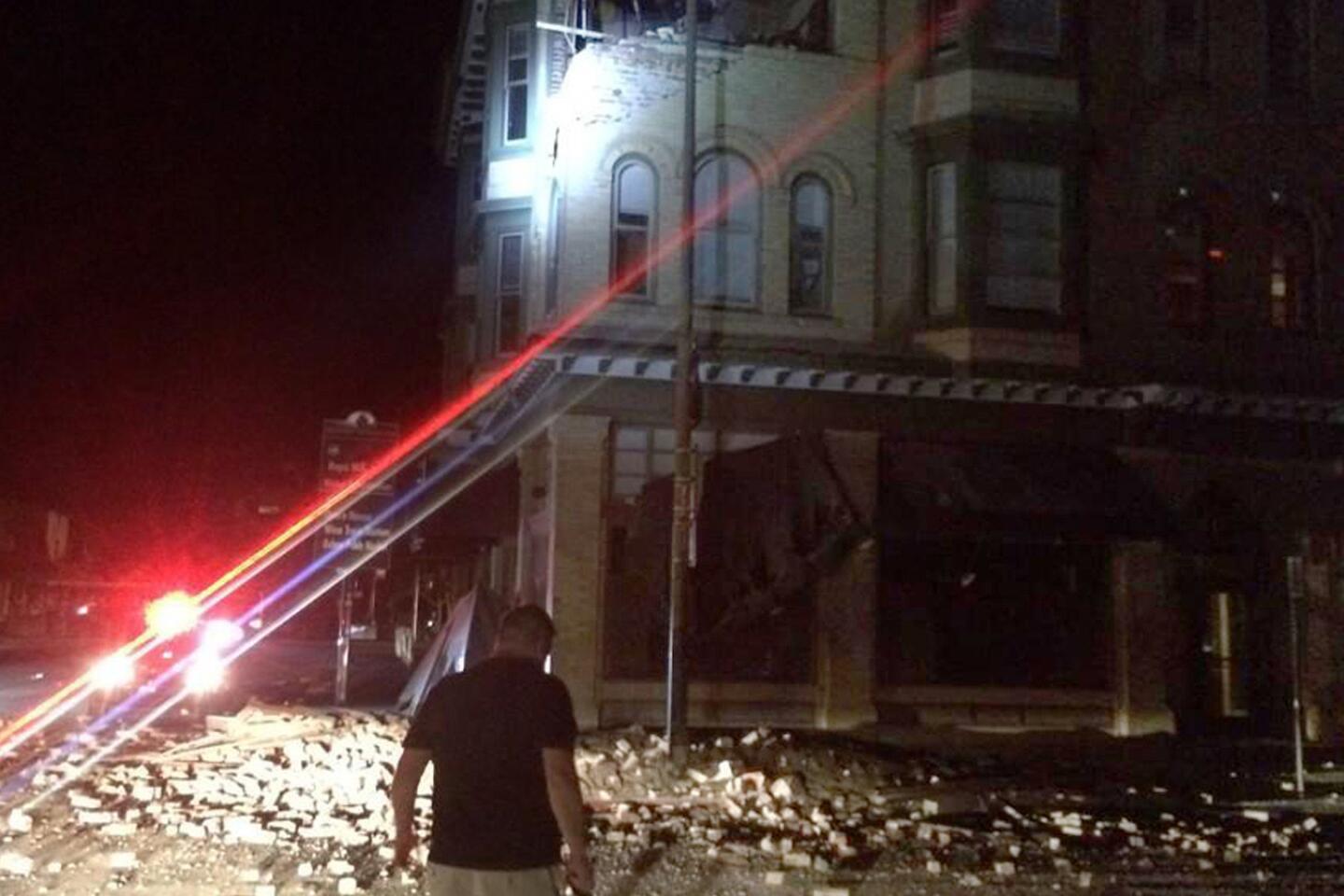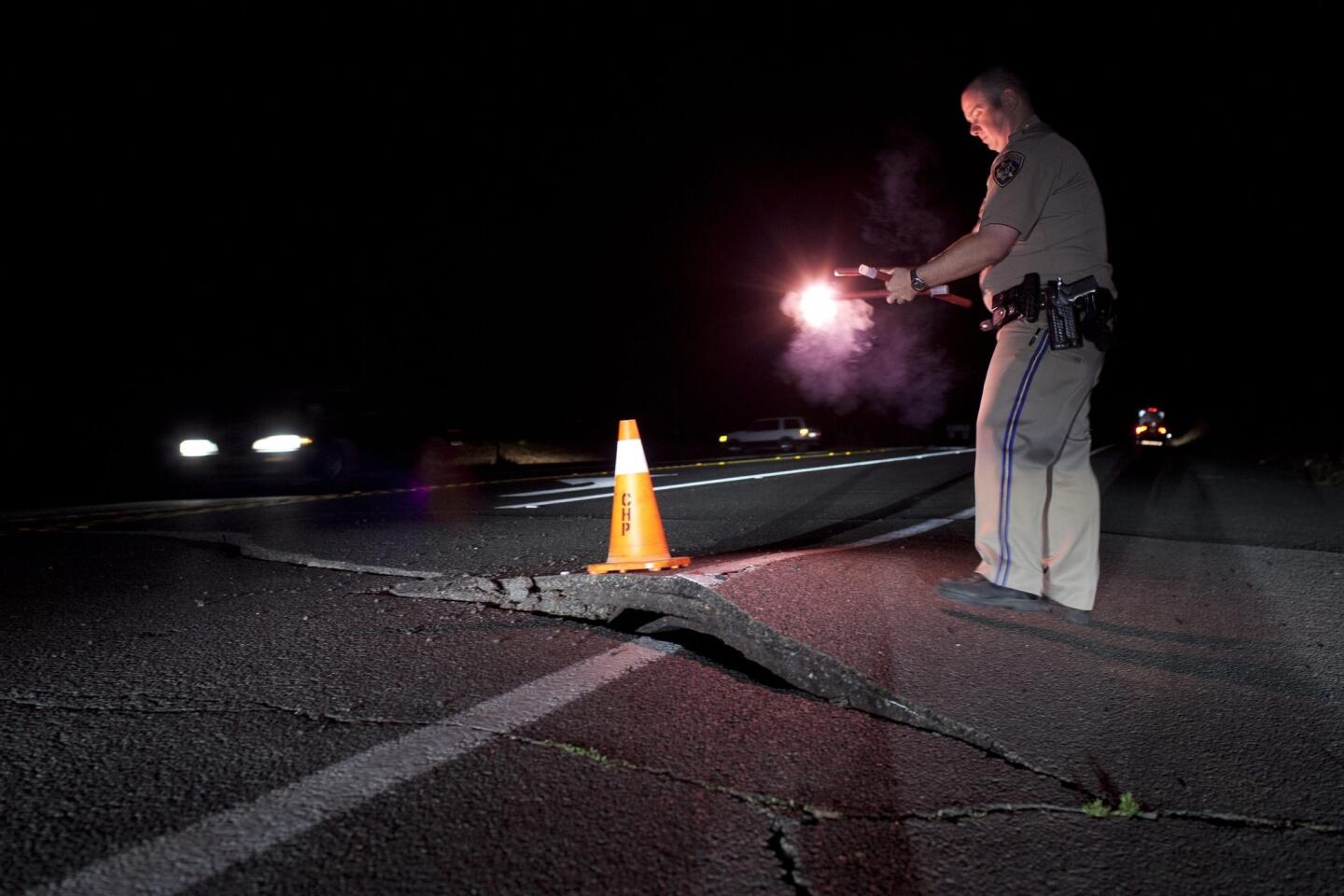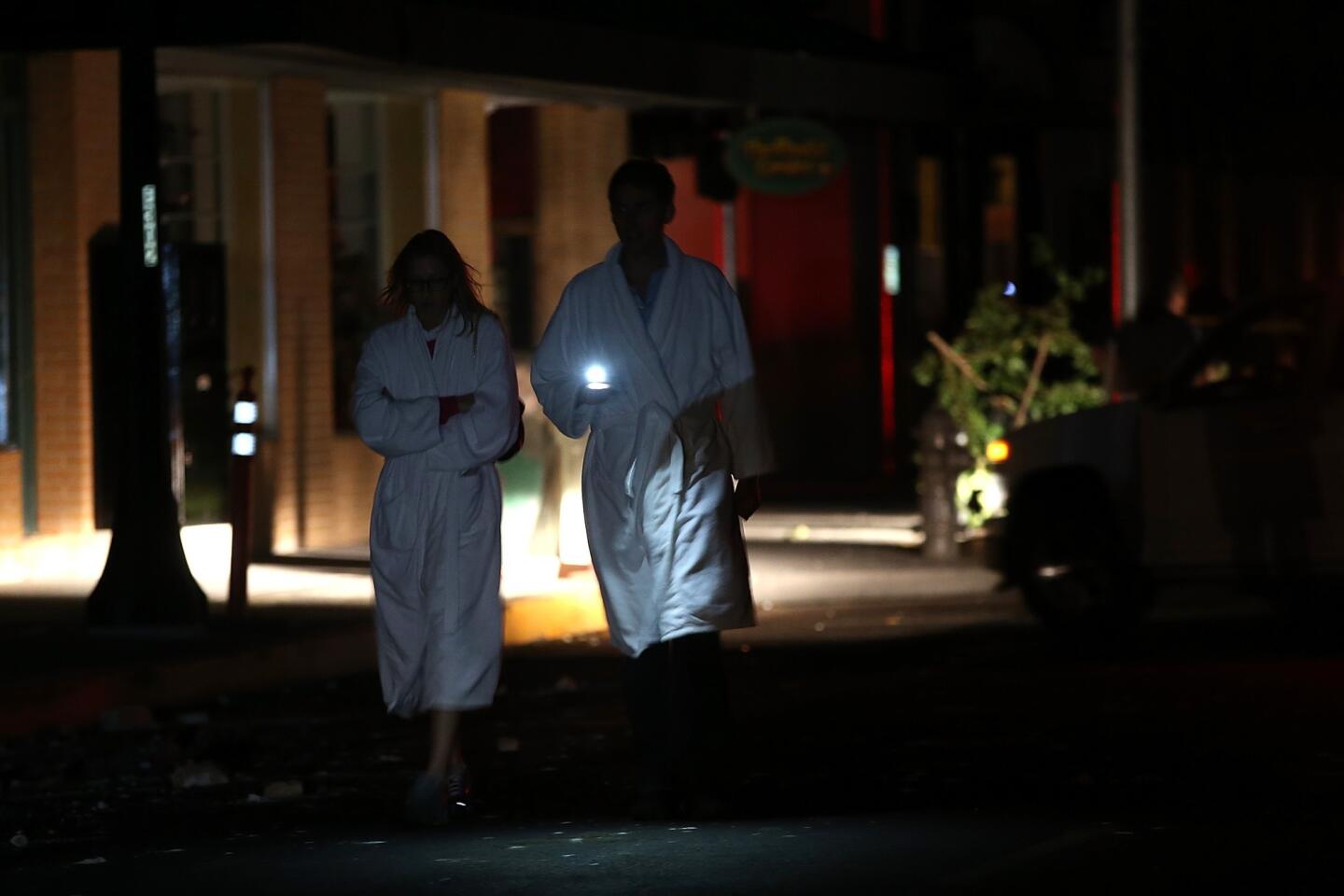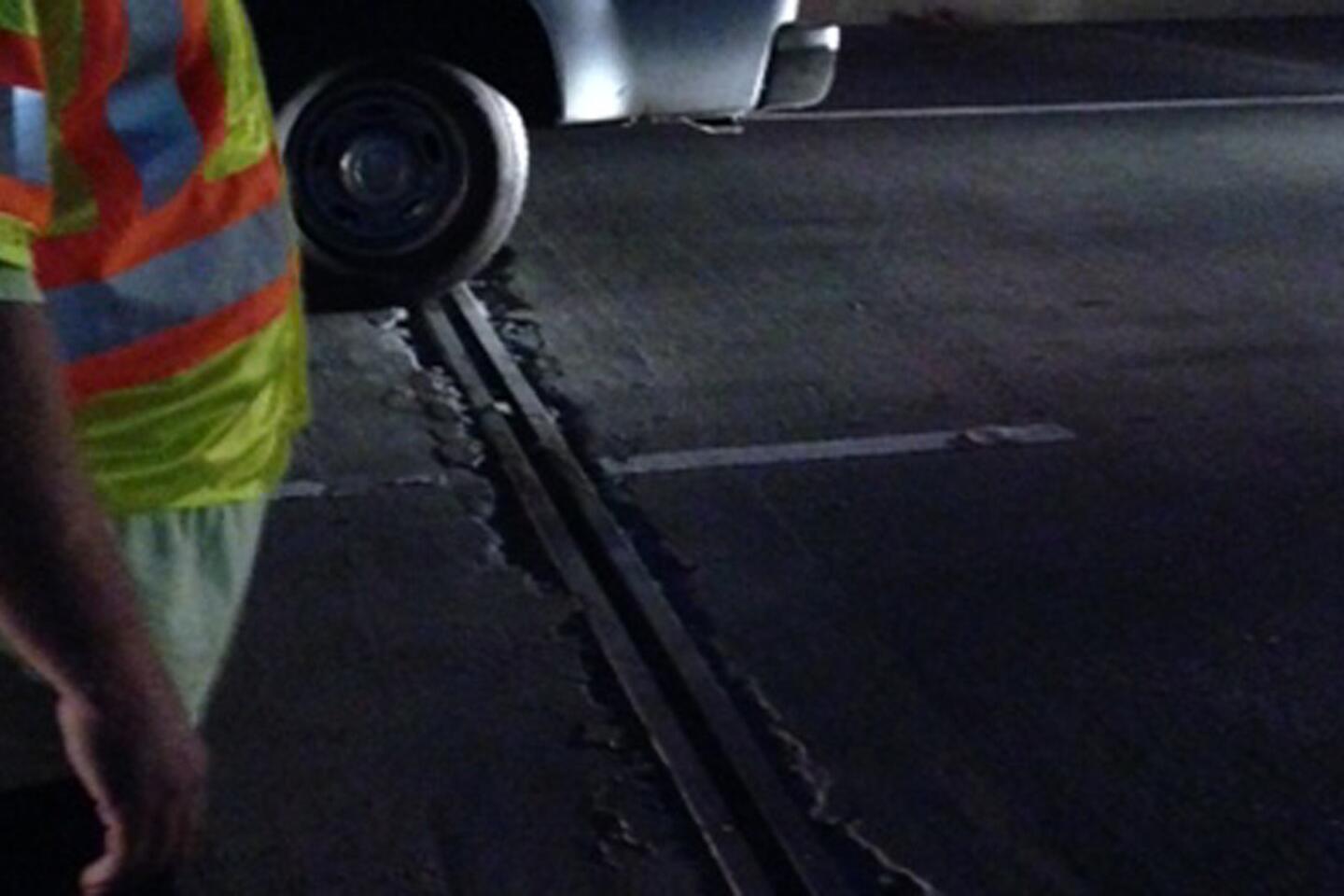Even buildings with seismic retrofits damaged in Napa earthquake
REPORTING FROM NAPA, CALIF. — City officials in Napa had long worried that the grand building on the corner of Second and Brown streets — with its brick walls and giant red-tiled cupolas — could be devastated by a major earthquake.
So city officials required brick structures such as the landmark Alexandria Square building to get seismic retrofitting — bolting brick walls to ceilings and floors to make them stronger. The work was completed years ago on the 104-year-old property.
But when a 6.0 earthquake struck Sunday morning, the walls on the top floors crumbled, showering brick and mortar onto the sidewalk and outdoor café.
The destruction highlights one of the greatest fears of seismic engineers — that the retrofitting of unreinforced masonry buildings still leaves weak joints between bricks. Whole chunks can fall, sending bricks crashing down.
“We can’t keep every single brick in place in many of these older buildings without extraordinarily costly retrofits,” said Fred Turner, structural engineer with the California Seismic Safety Commission. “We can reduce the damage in losses, but not eliminate them entirely in older buildings.”
Many cities have laws requiring owners to seismically retrofit buildings. The work has prevented countless deaths by keeping these buildings from pancaking to the ground. Turner said the destruction in Napa would have been much worse without retrofitting.
But portions of brick walls can still tumble if the mortar holding the bricks together gives way during the shaking, Turner said. Mortar can deteriorate over time and grow so weak that the bricks can begin to slide.
Los Angeles passed a law in the early 1980s requiring brick buildings to be retrofitted. When the 1994 Northridge quake hit, most had been strengthened. But even some retrofitted buildings were severely damaged, though no one died inside them.
“It’s not a guarantee,” said Napa City Manager Mike Parness of retrofitting brick buildings. “A strong enough earthquake is going to cause damage.”
There are more costly retrofitting options that can better fortify brick buildings, such as adding reinforced concrete or polymers to the brick walls or installing diagonal braces. But most cities require less stringent, less costly rules.
The Alexandria Square building had already been retrofitted when a local lumber family bought it in 2004, said Mike DeSimoni Jr., the son of the property owner. The three-story building, which has a blond brick facade with olive trim, houses a wine bar, a bar and grill, and two floors of office space used by accountants, lawyers and a downtown tourism group, DeSimioni said.
When the quake struck at 3:20 a.m. Sunday, part of the third-story cupola collapsed onto the sidewalk below. A restaurant, Carpe Diem Wine Bar, has outdoor seating under broad awnings during the warm summer months. If the earthquake had struck at any other time, DeSimoni said, “we could have lost lots of people.”
“You can’t replace people, but you can put new brick on a building,” DeSimoni said. “We’re pretty fortunate that it happened when it did.”
Based on photos of the building, David Cocke, president of Structural Focus, an earthquake retrofit firm based in Gardena, said it appeared the mortar between the bricks was in poor condition.
“There’s a limit to that level of retrofit,” said Cocke, a member of the Structural Engineers Assn. of Southern California. “Everything has got to work right, and if the shaking is strong enough, it could still result in a dangerous situation. And no owner is going to spend the money to come in and make that particular building as strong as a hospital. It’s just not going to happen; it’s not economically feasible.”
Officials said a standard part of retrofitting brick buildings should be to test the mortar.
“Owners need to be prepared to replace and restore that mortar to a safe condition. That’s a very expensive undertaking,” Turner said.
Napa officials had launched an aggressive campaign to get its historic brick buildings retrofitted; out of 18 identified, 12 have been strengthened, said Rick Tooker, the city’s director of community development. The retrofit deadline was in 2009. But three buildings were still in the process of retrofit planning without a timeline for completion.
The owner of those three buildings, Brian Silver, said he hasn’t been able to afford the $500,000 cost for retrofitting. He added that one of the building’s design, from the early 1900s, comes close to Napa’s current seismic code, including steel-reinforced beams and plates connecting the walls to the floor.
The building survived the 1906 San Francisco earthquake and the 5.2-magnitude Napa earthquake in 2000 with only minor damage, he said. The earthquake Sunday tore a hole in Silver’s law office wall. Falling bricks from the building crushed a parked car.
He said some people lose sight of the “reality of retrofitting,” that doing the work is not a guarantee that the building will emerge unscathed. Several years ago, officials said he must post signs warning the public that the building was not reinforced to code. That drove several tenants away, he said. Currently, he rents space to a jewelry repair shop, several lawyers and a bail bonds office.
Silver said he now has enough money to pay for strengthening his buildings. “I’m going to do it as quickly as I can. I was planning on remodeling my house,” he said with a laugh, “but I think that will have to wait.”
Tooker said the city has sent three notices of violation to Silver over the last two years.
At 1245 Main St., the daylight of Sunday showed the damage to Vintner’s Collective, a tasting room in downtown Napa. The building still stood, but the upper-right of the building’s handsome sandstone facade had crashed to the sidewalk in a pile of rubble.
Co-owner Kim Erasmy said the building was retrofitted before she bought it in 2002, but now city officials told her the building may be too unstable for her to go in.
“Everything that was original has crumbled,” Erasmy said. “Everything that makes it a historic building is gone.”
christine.mai-duc@latimes.com
ron.lin@latimes.com
laura.nelson@latimes.com
Twitter: @cmaiduc, @ronlin, @laura_nelson
Times staff writer Mai-Duc reported from Napa. Lin and Nelson reported from Los Angeles.
More to Read
Sign up for Essential California
The most important California stories and recommendations in your inbox every morning.
You may occasionally receive promotional content from the Los Angeles Times.
